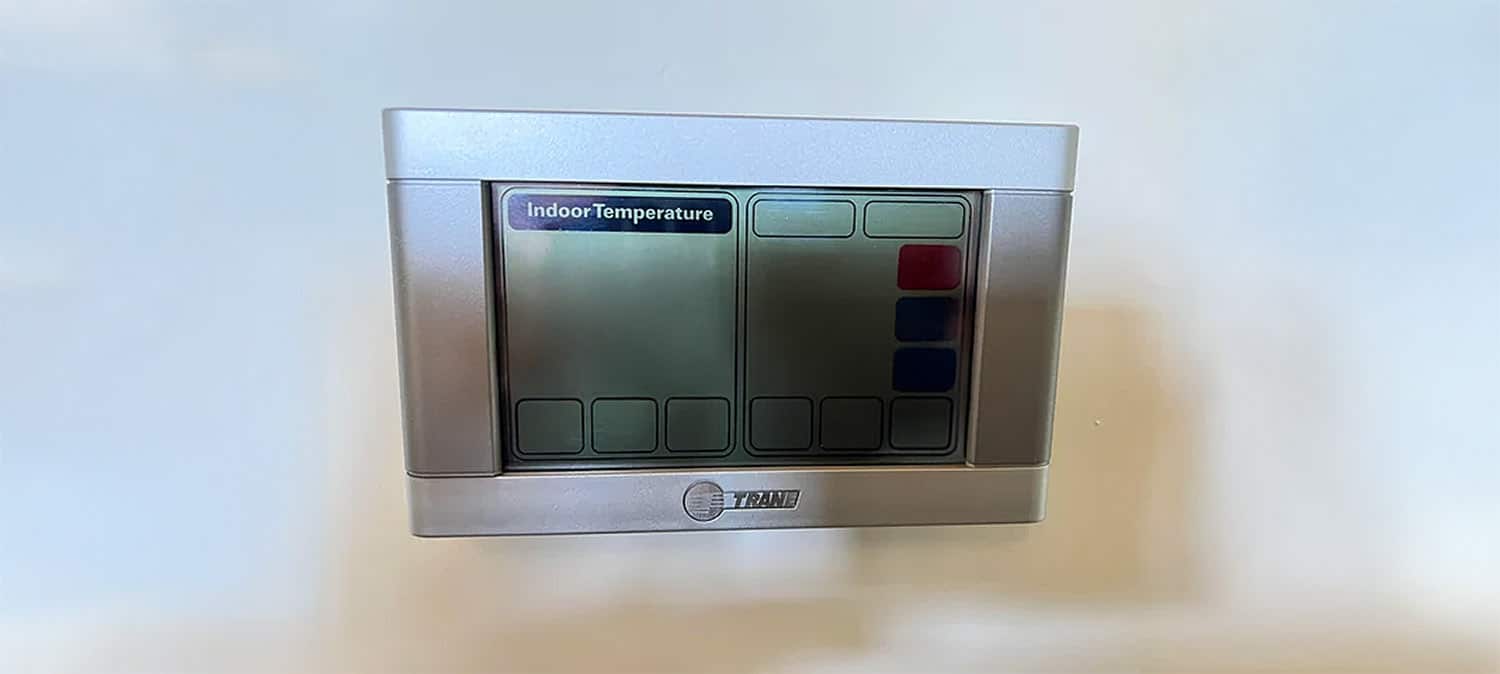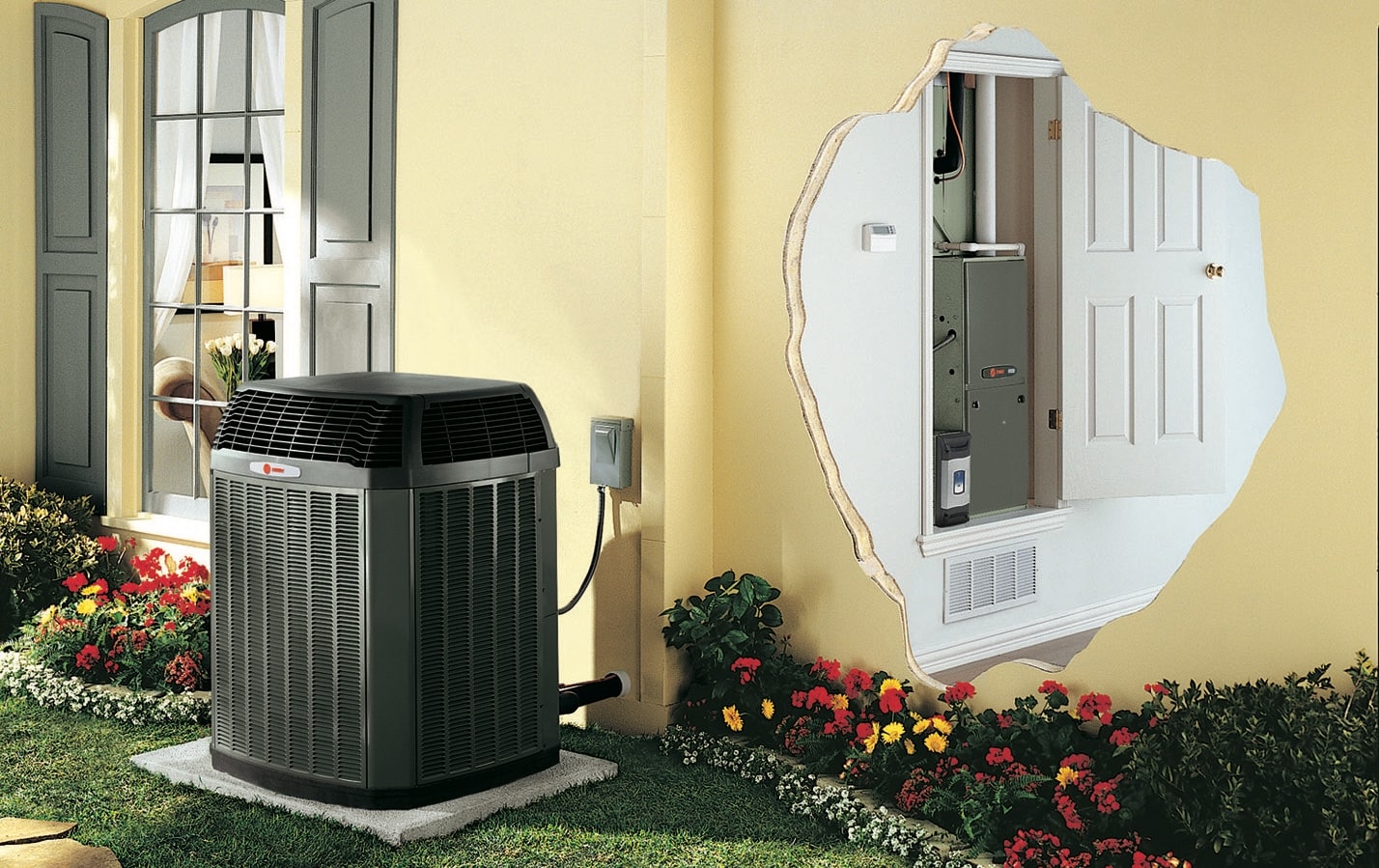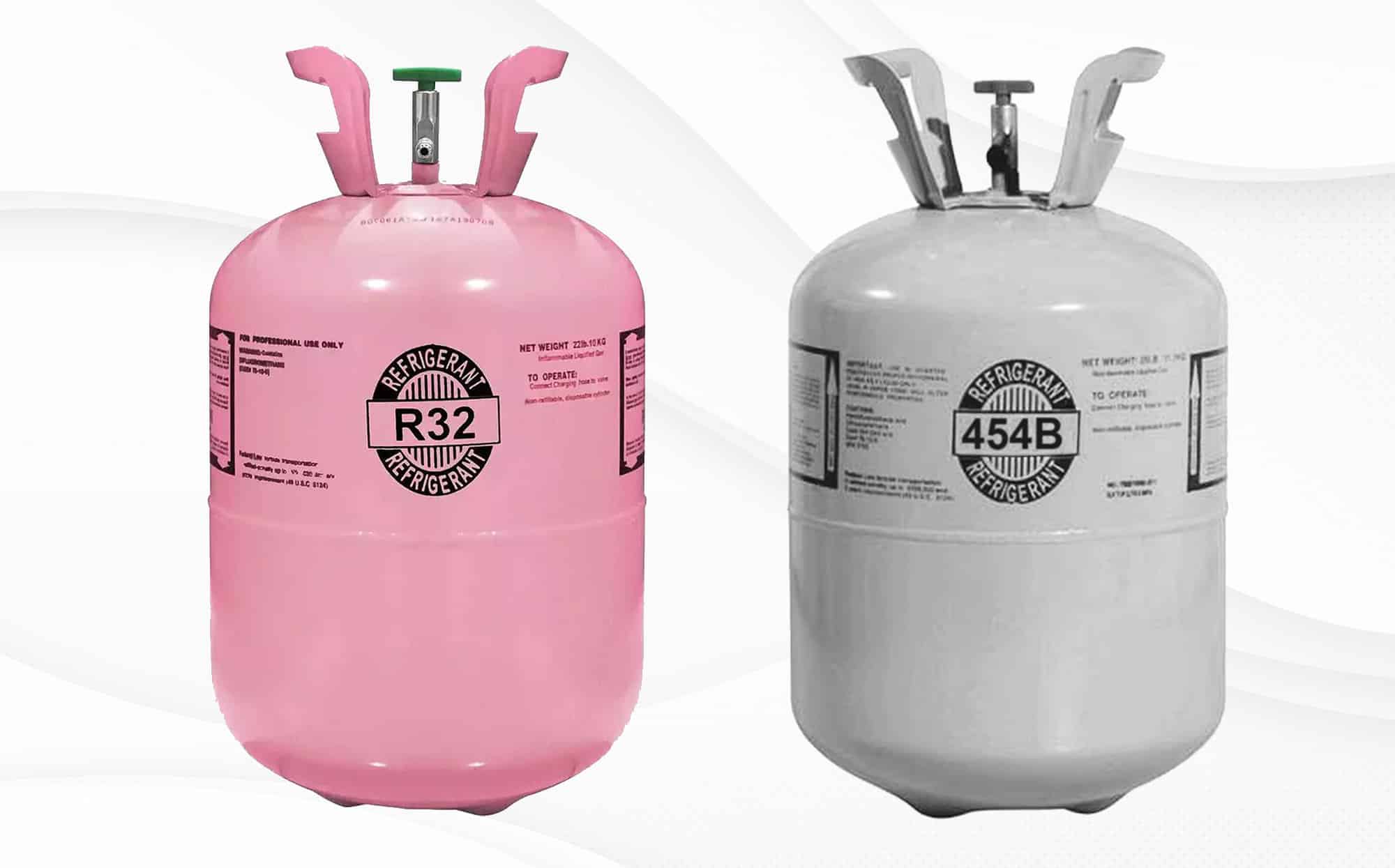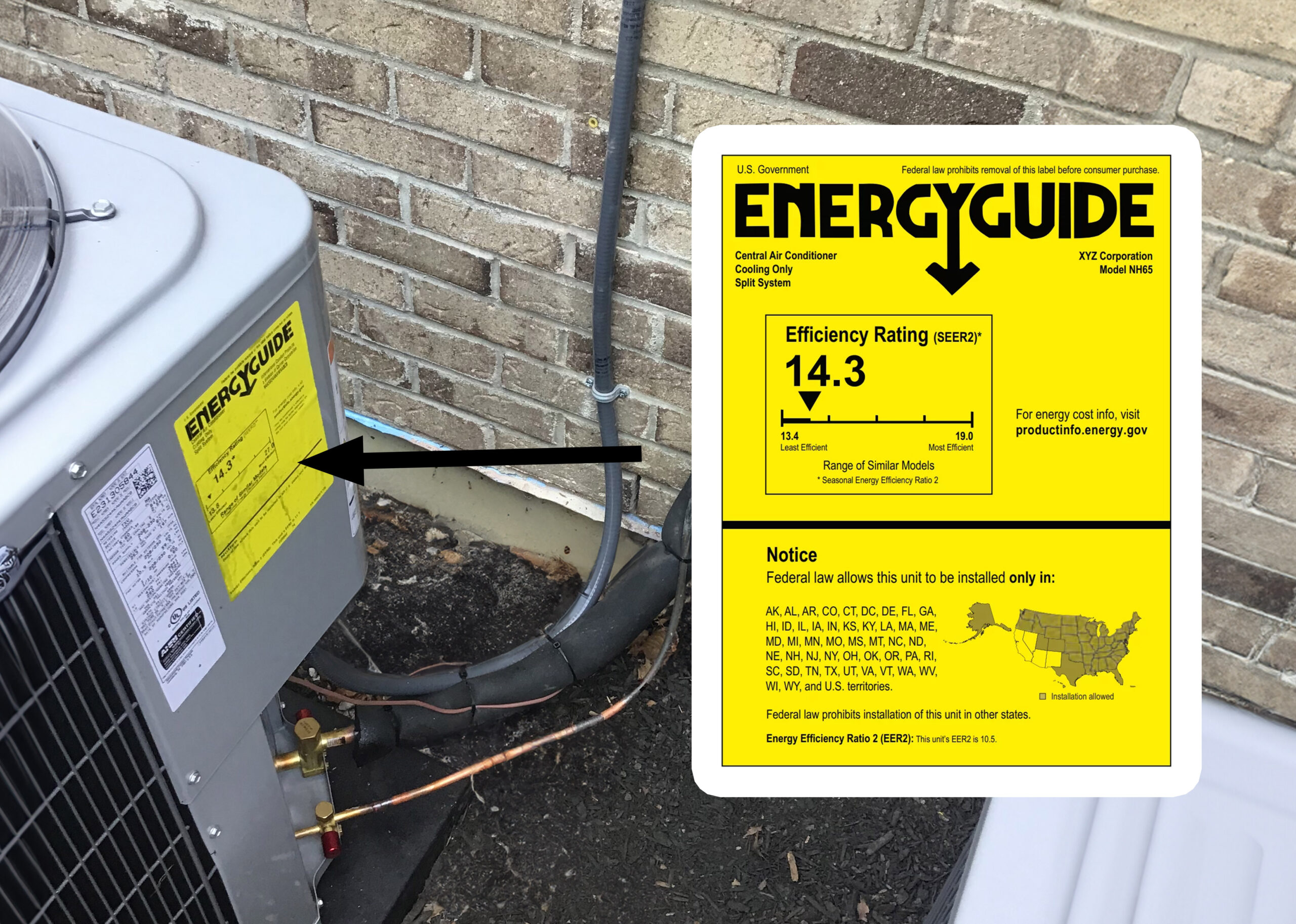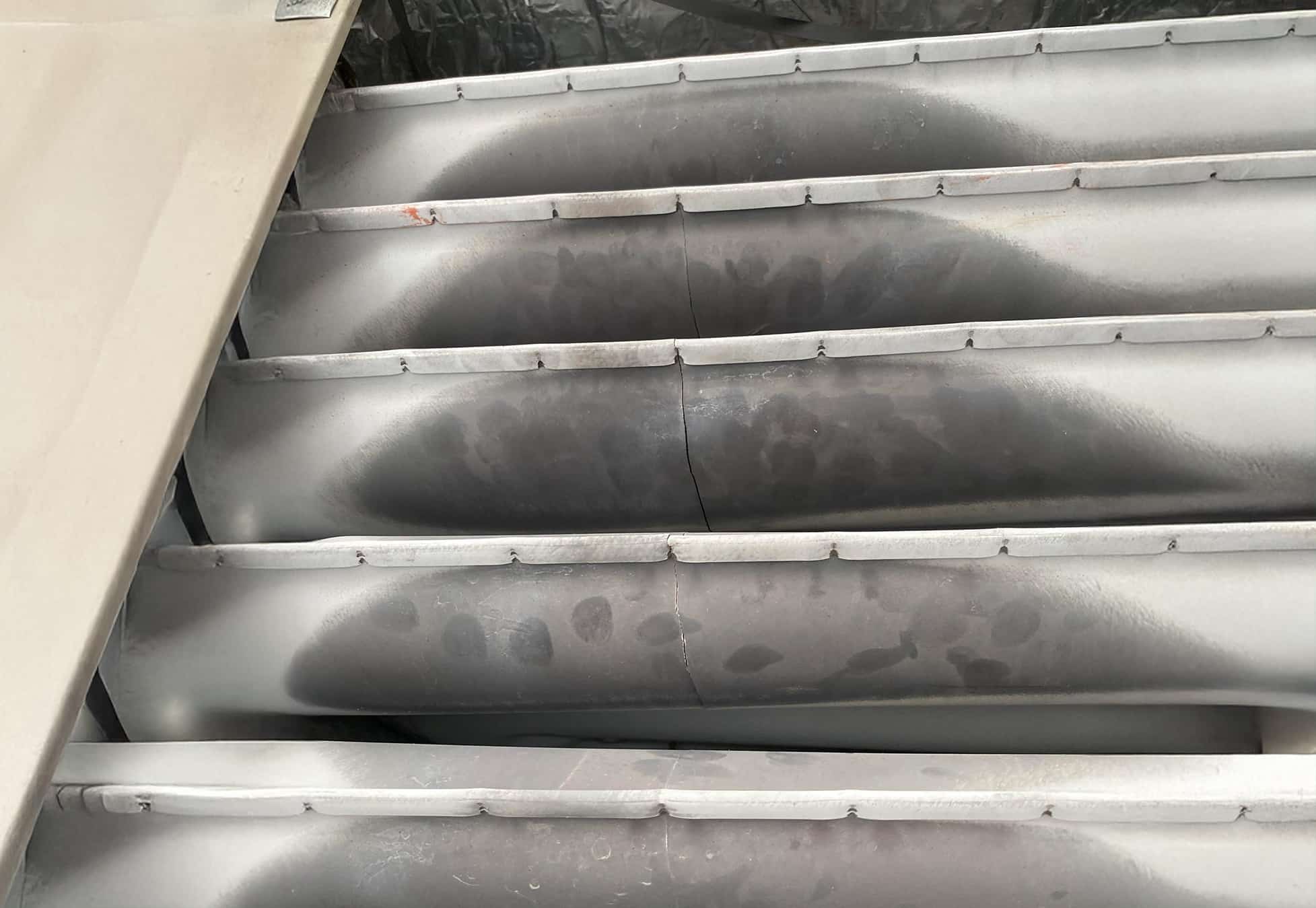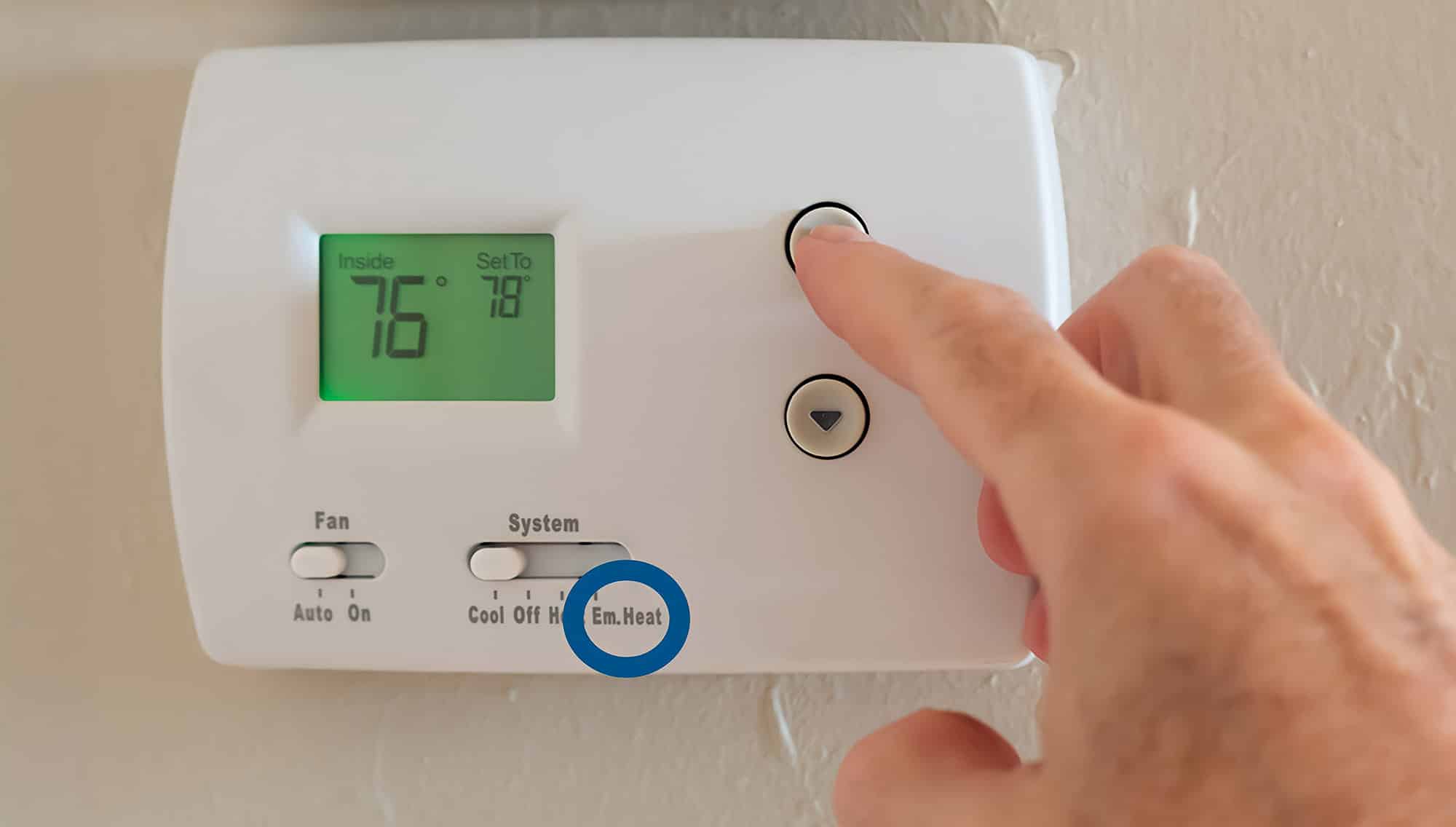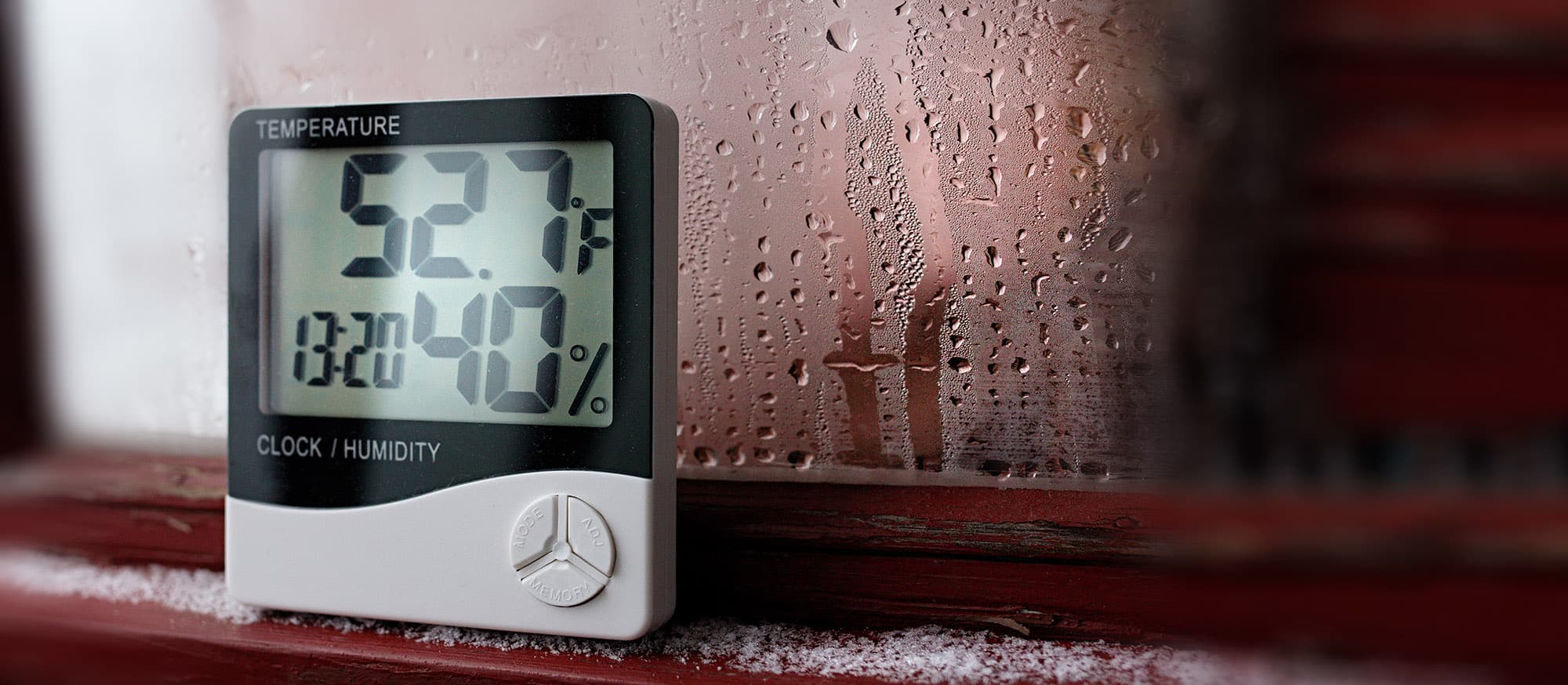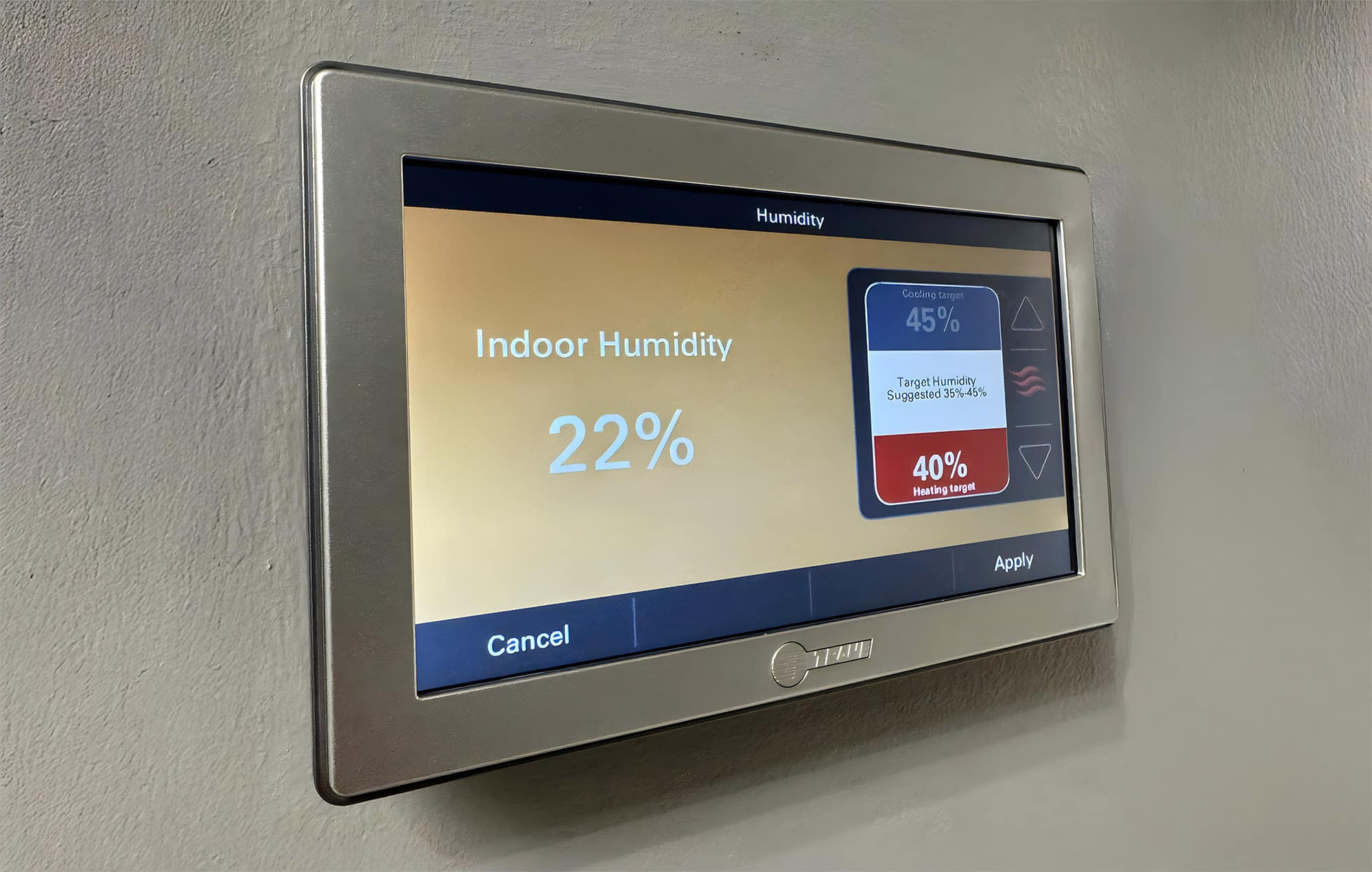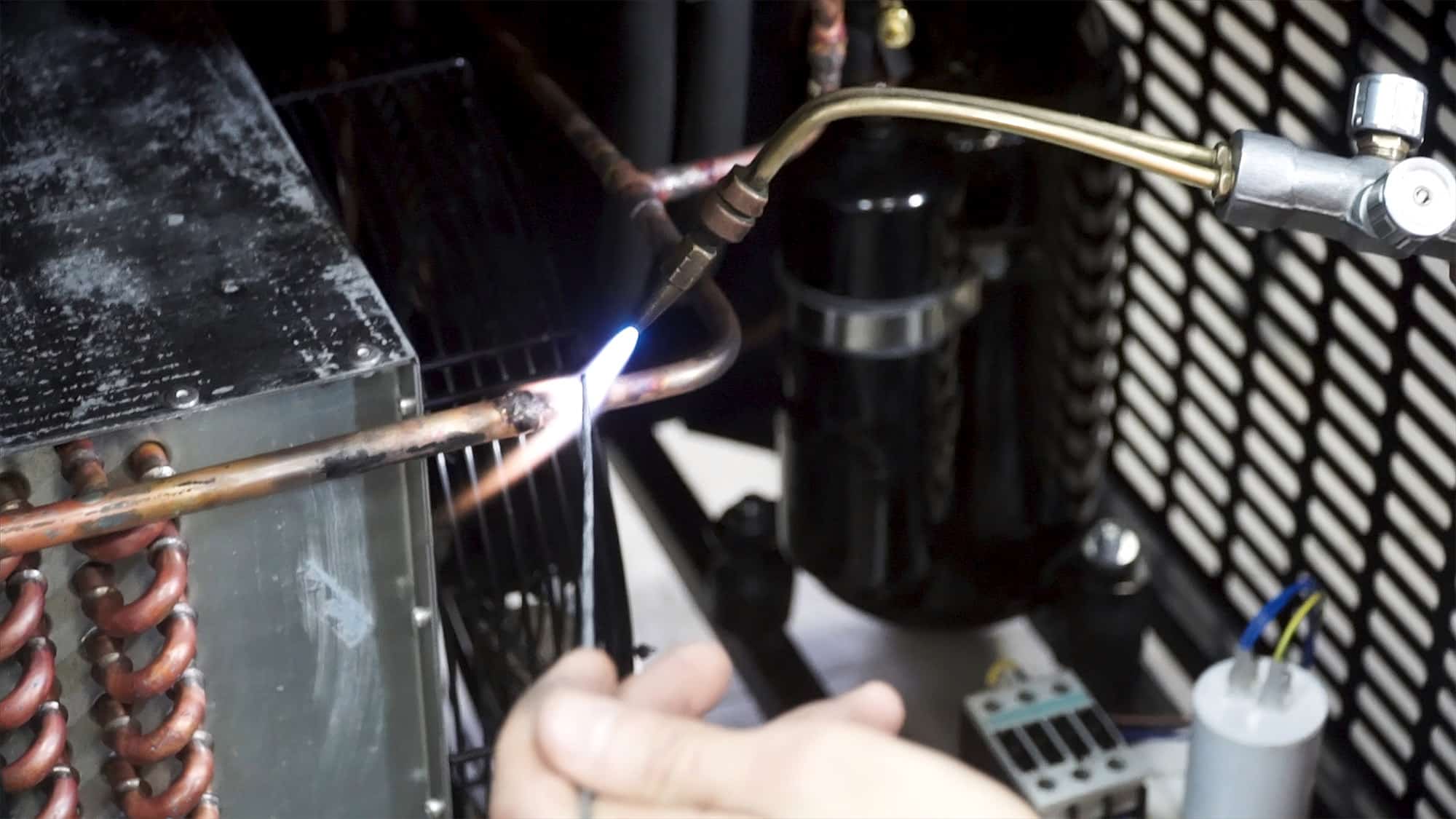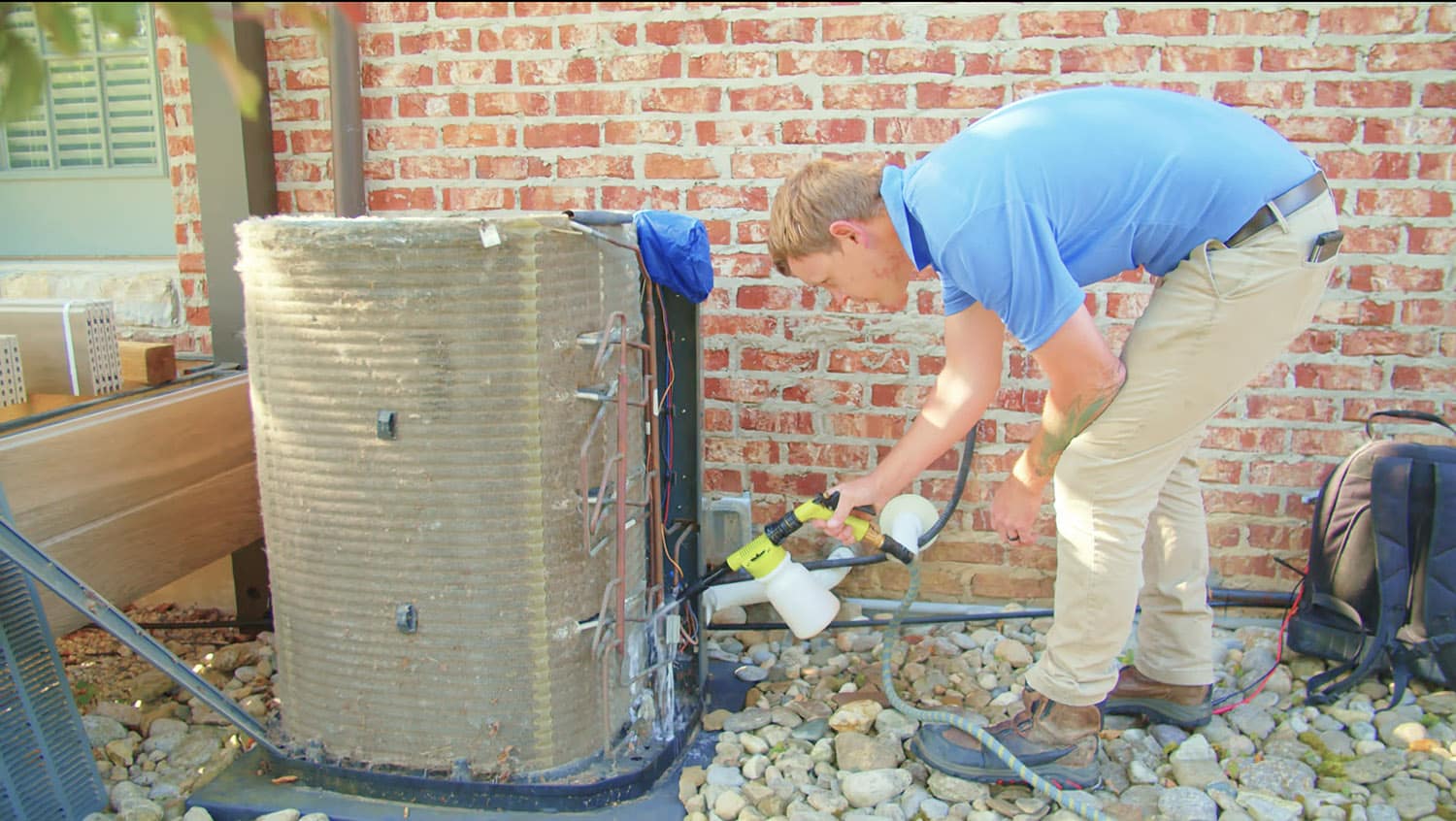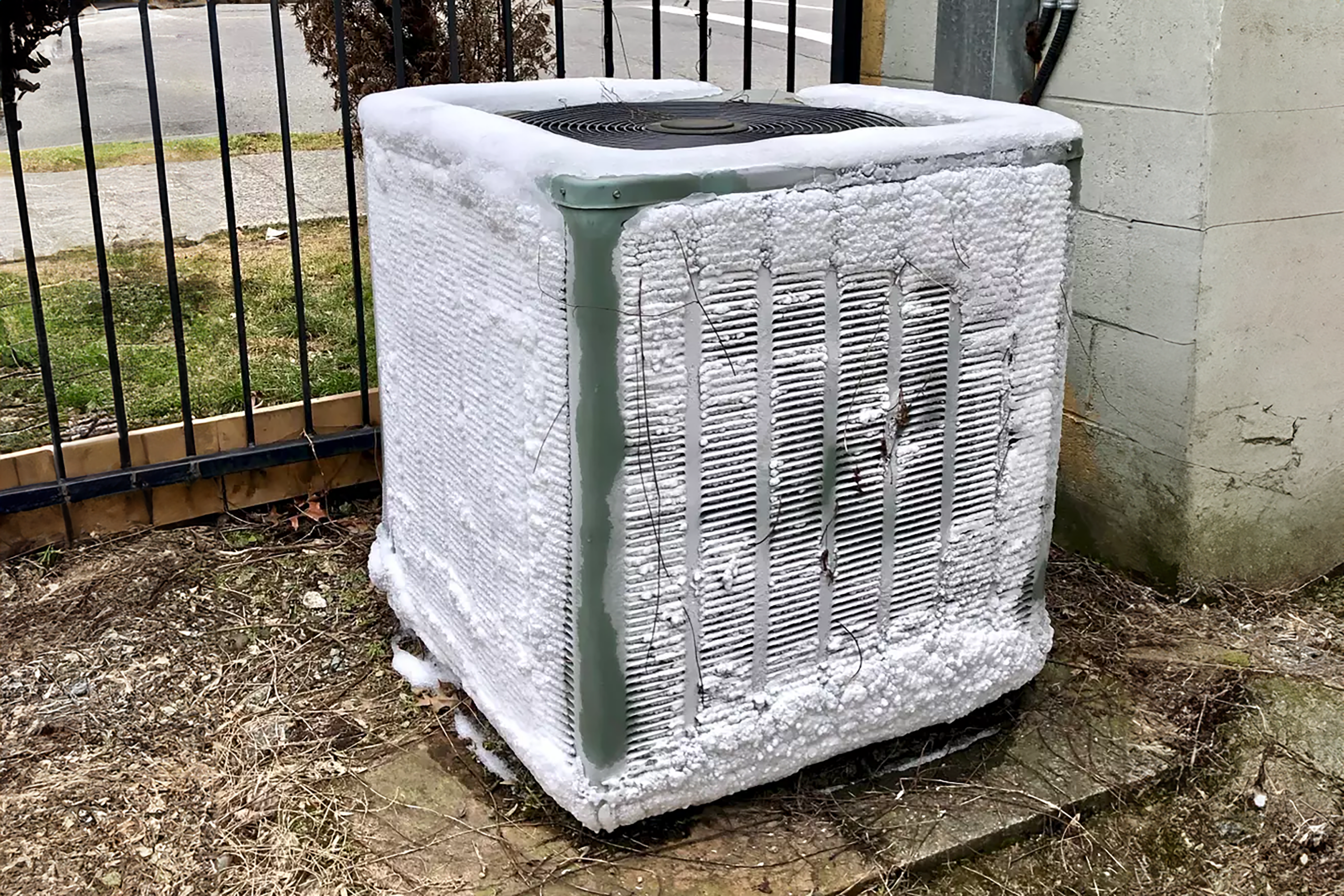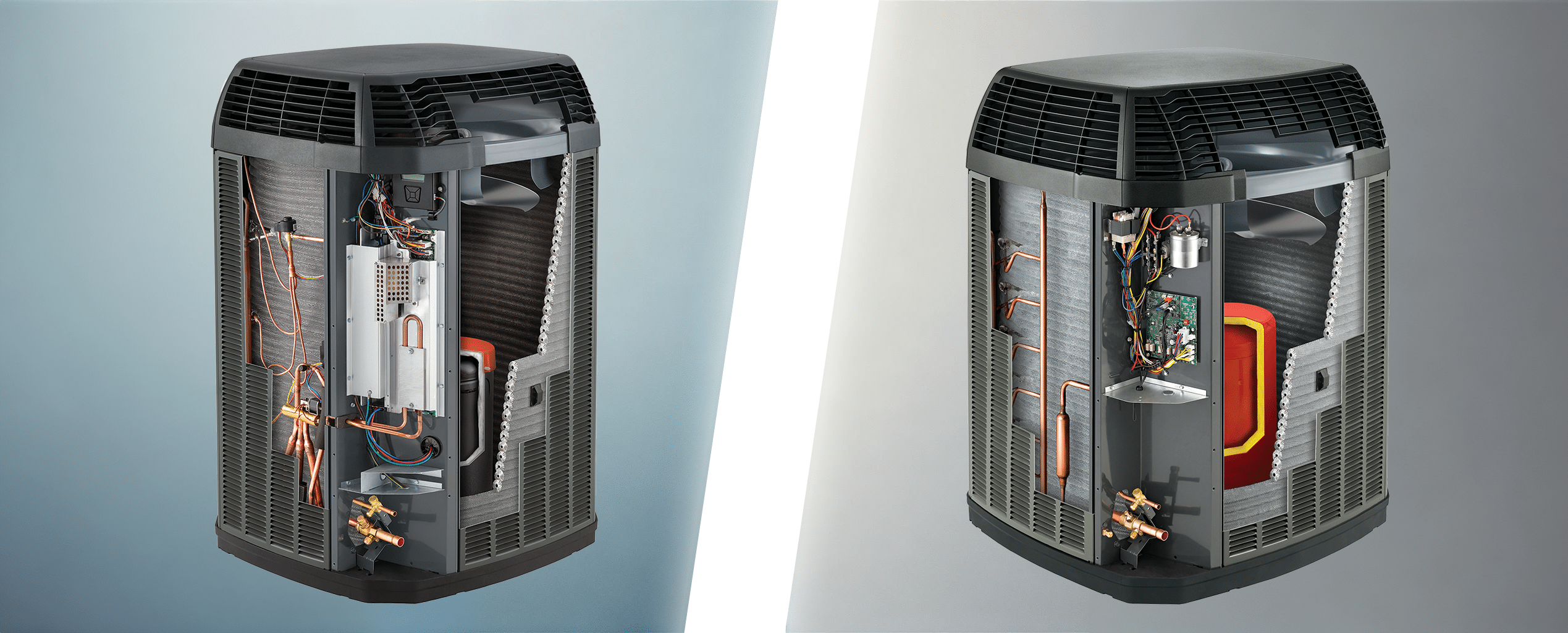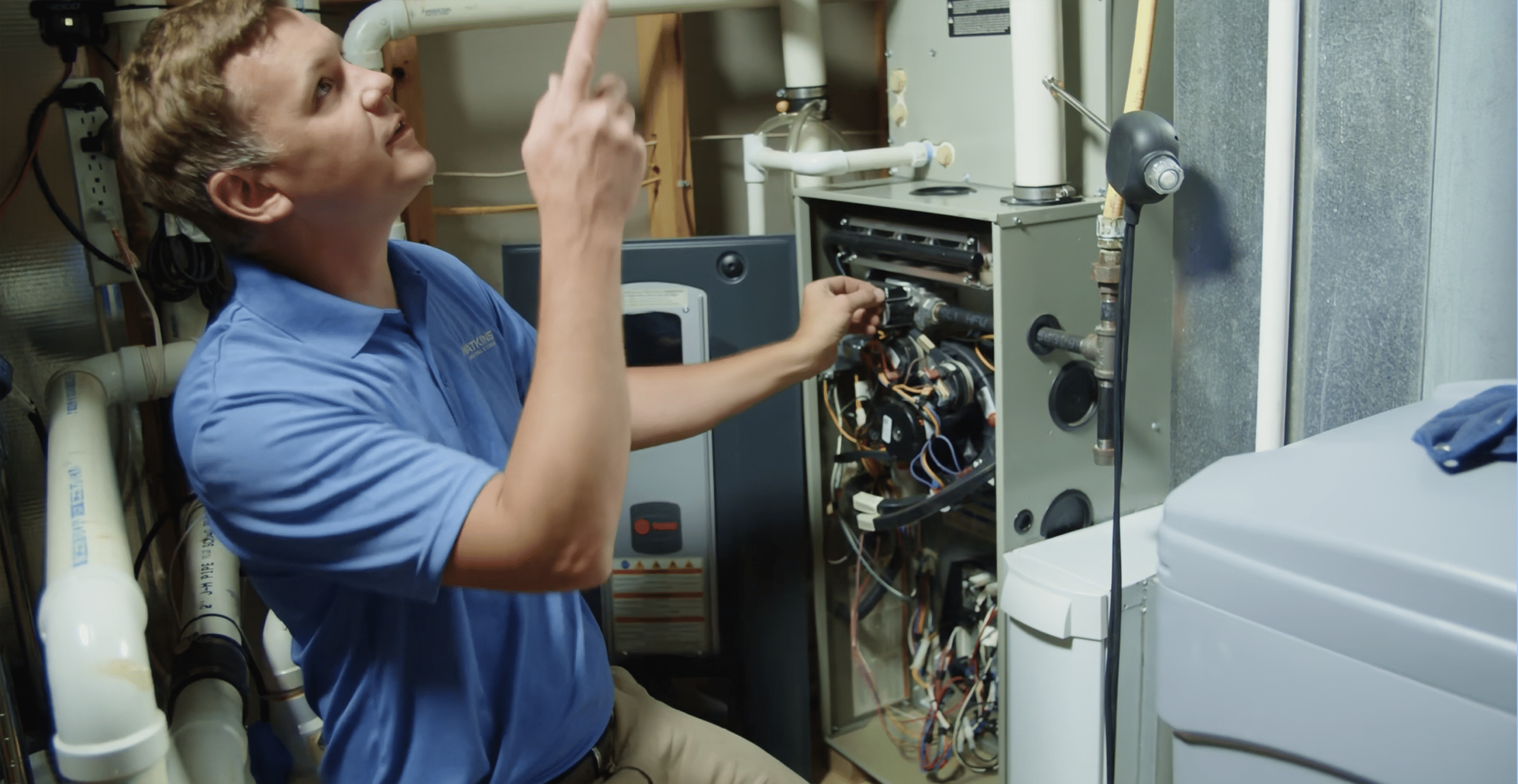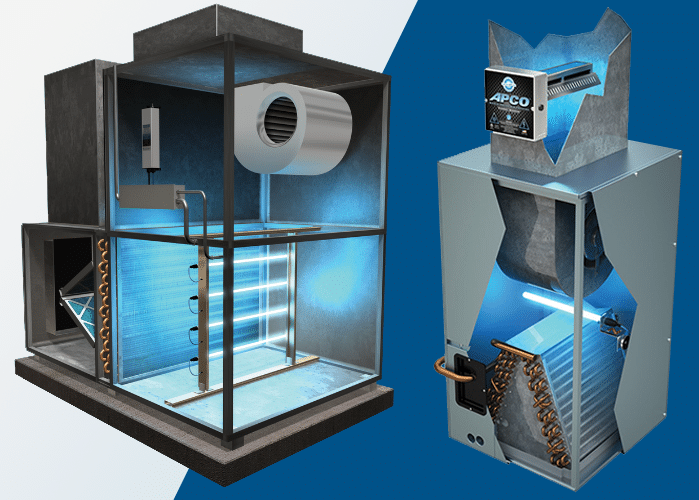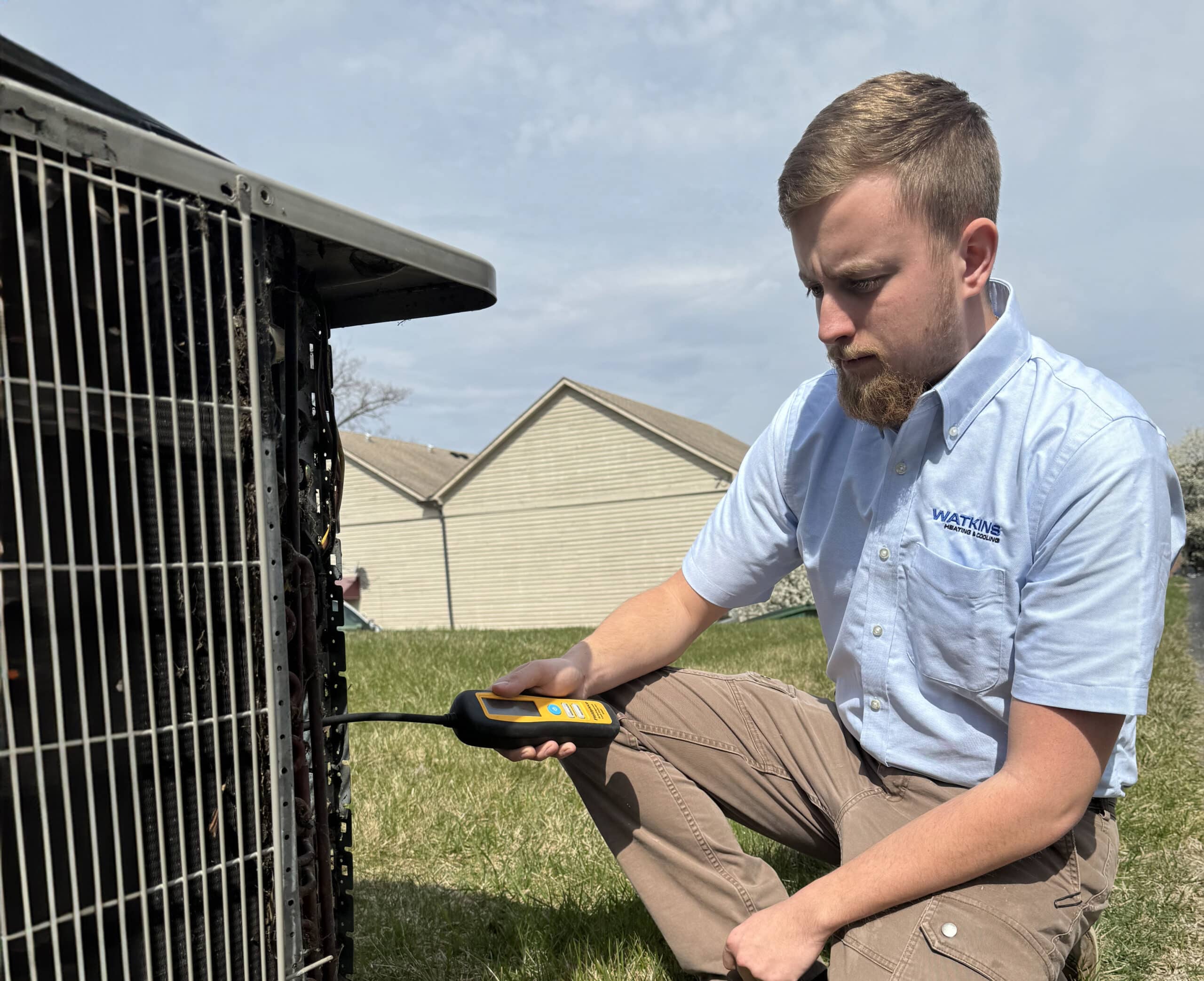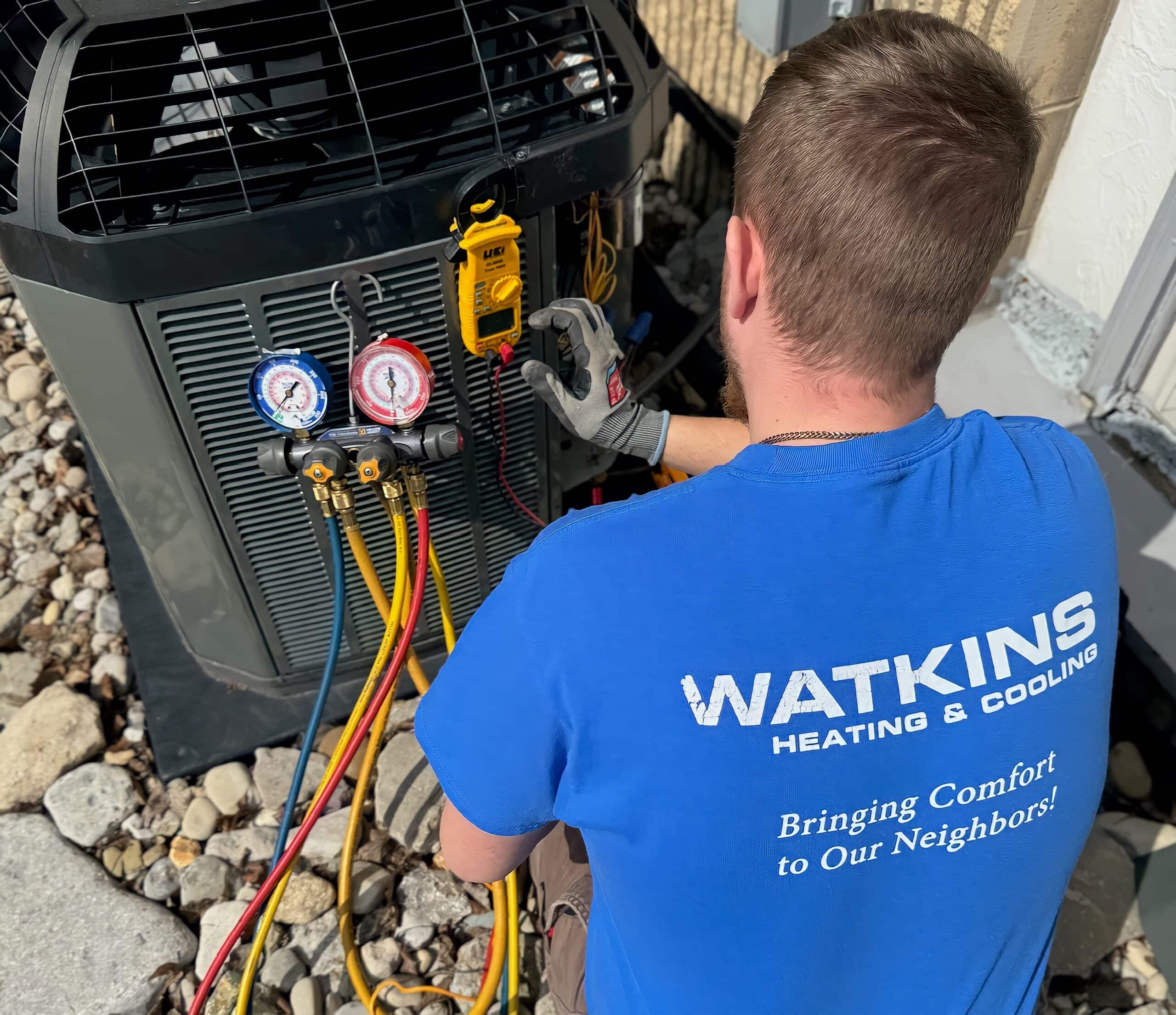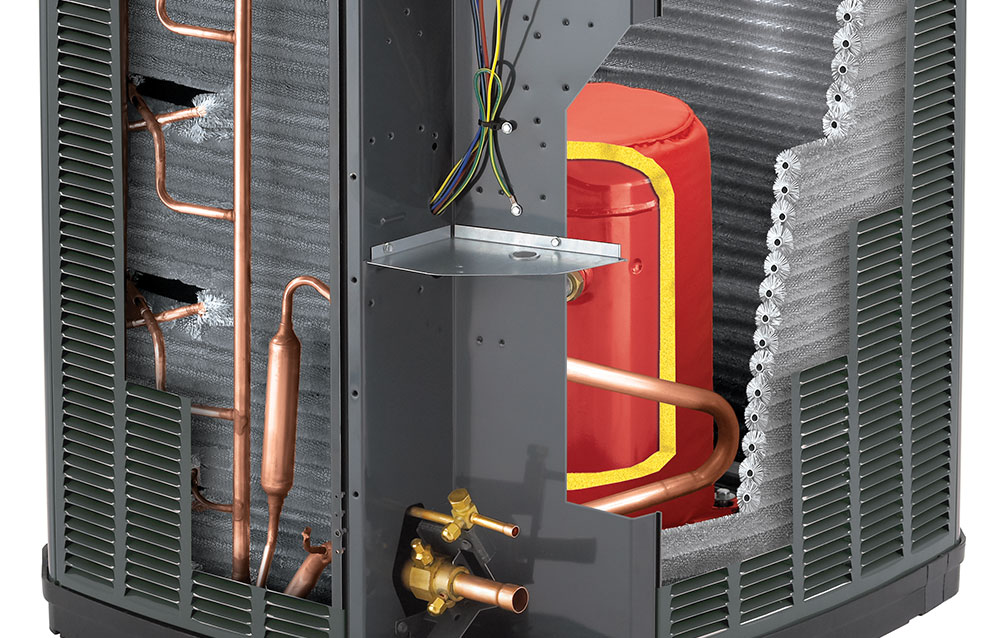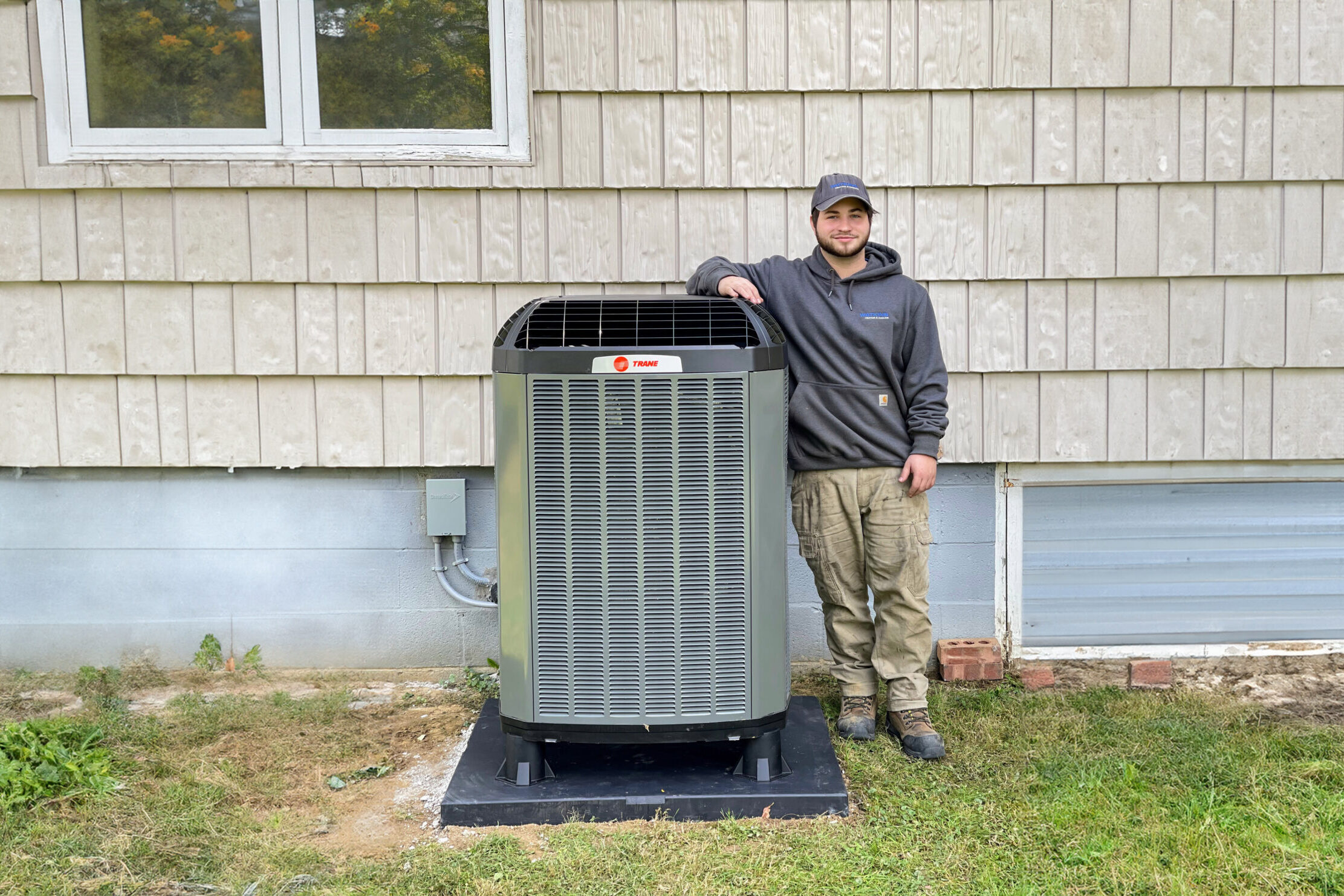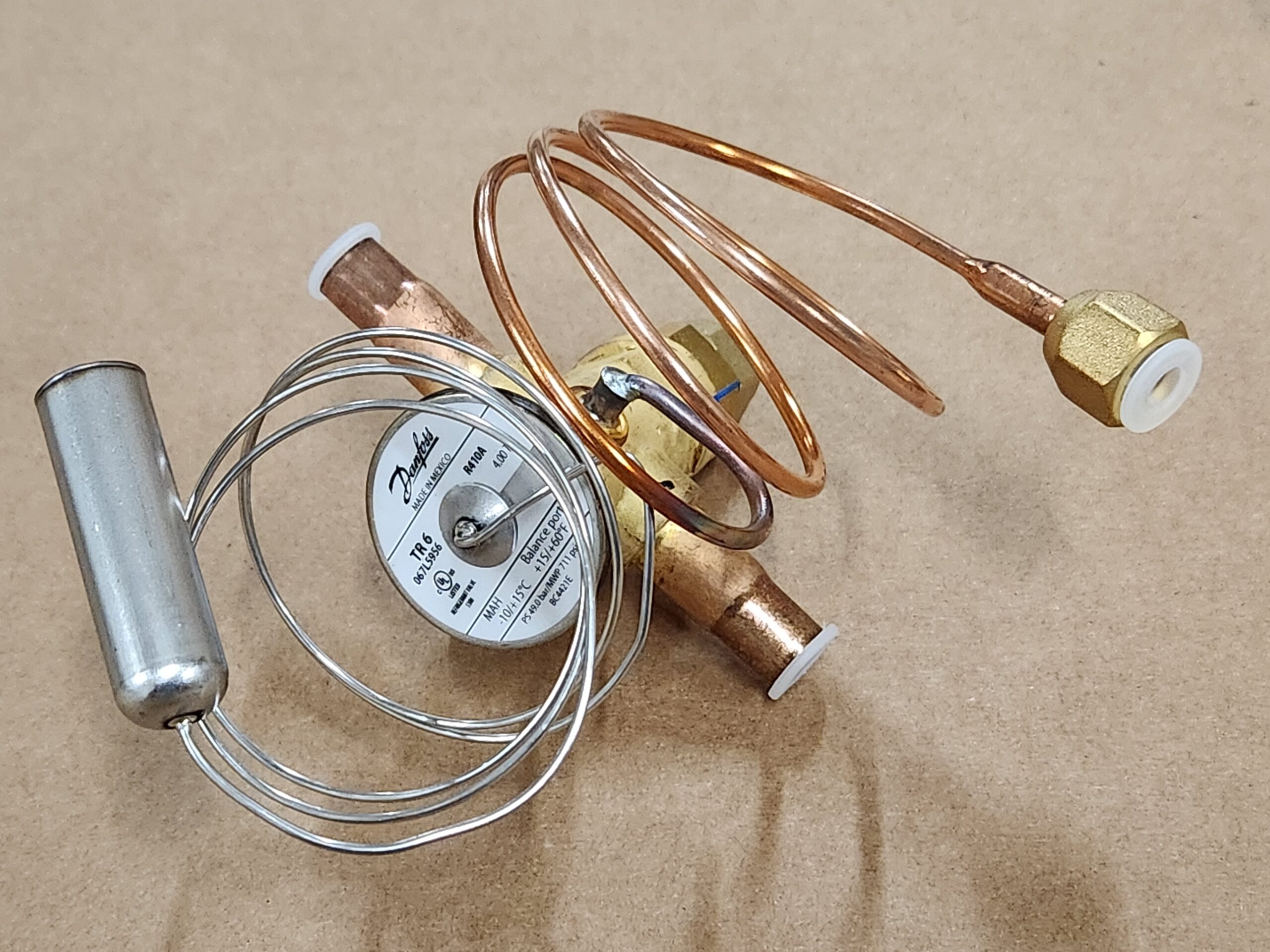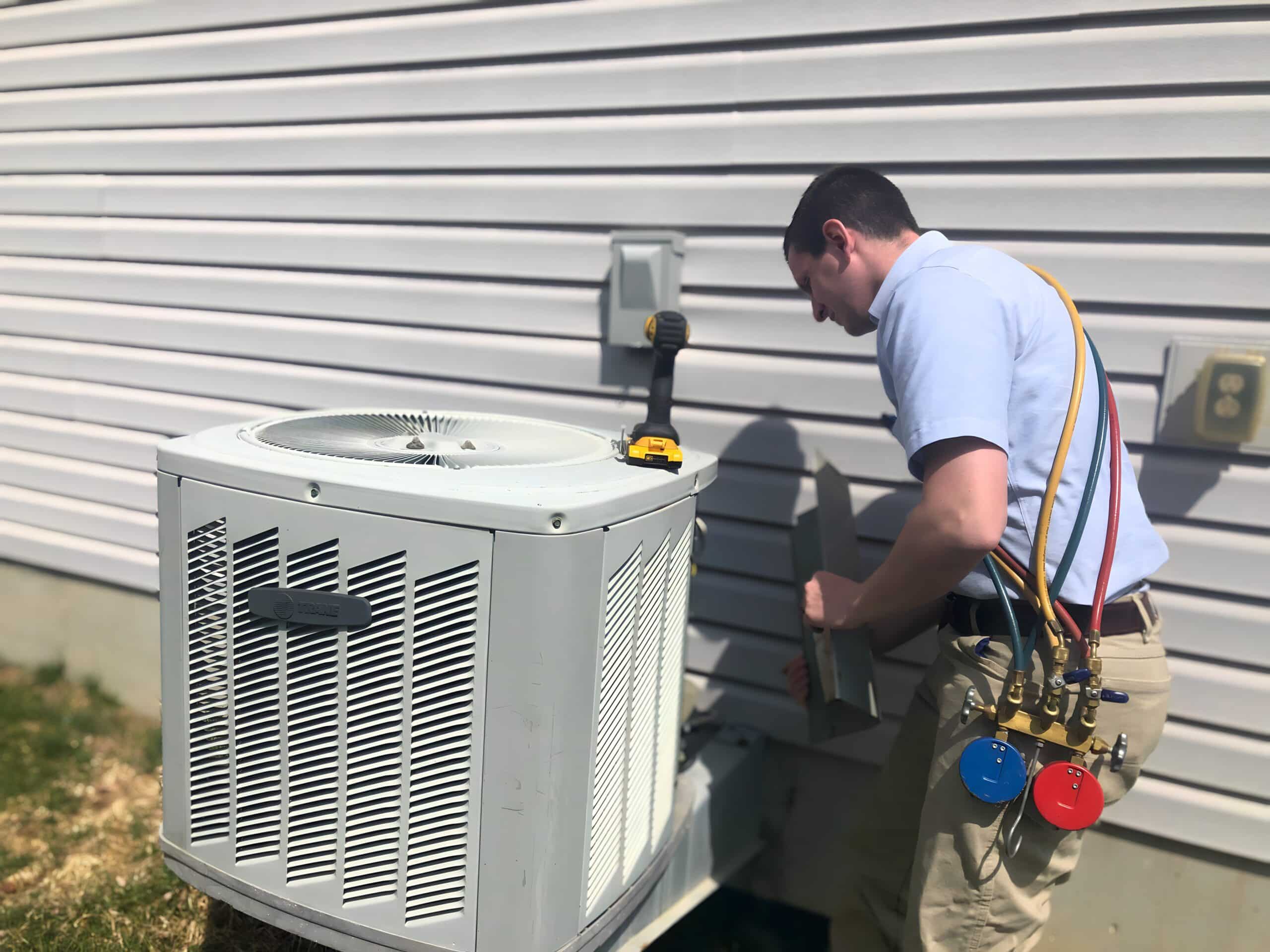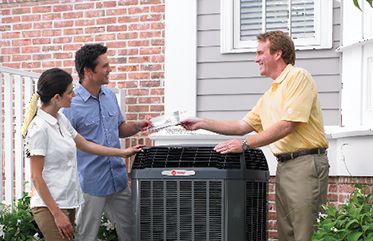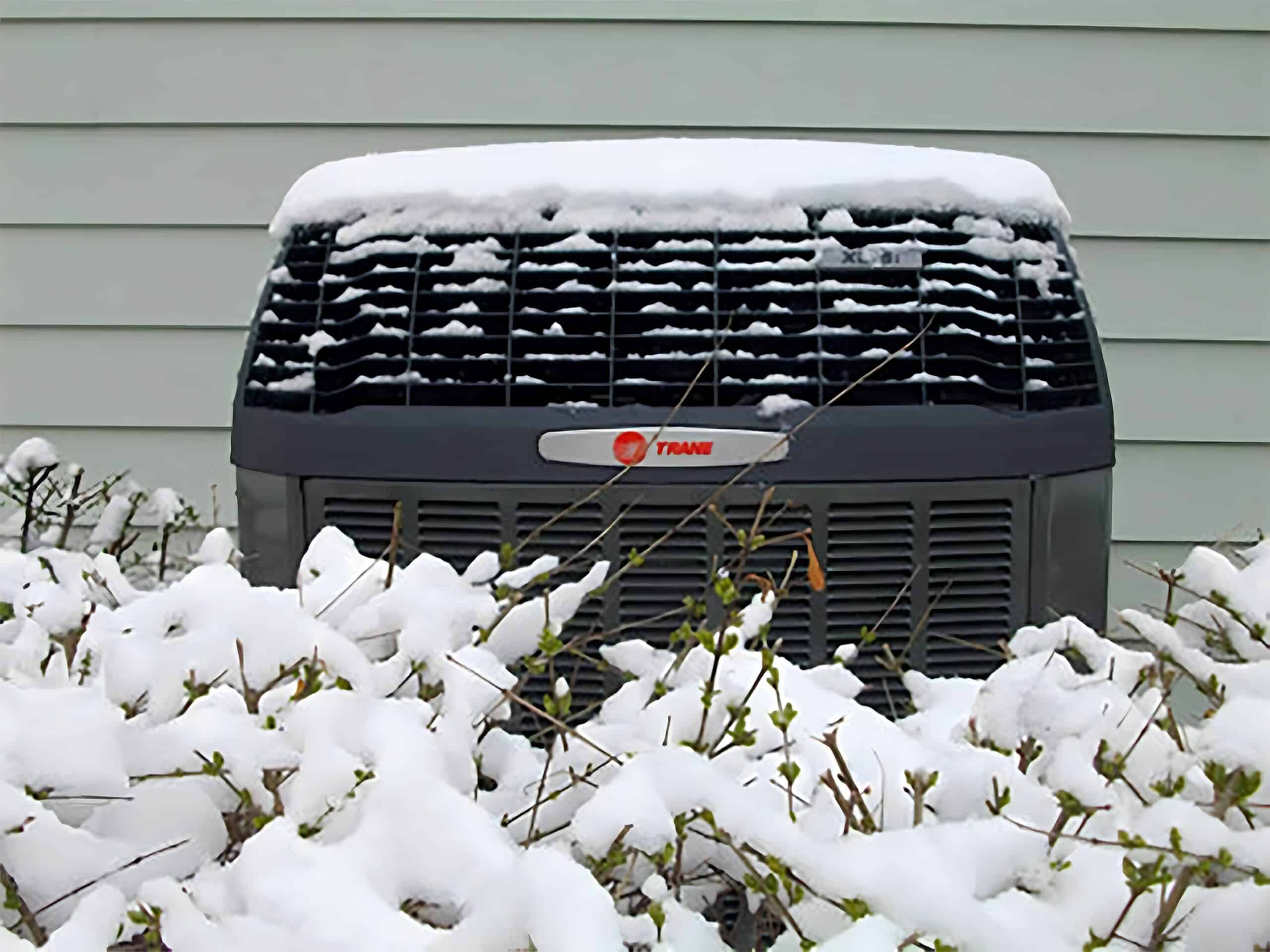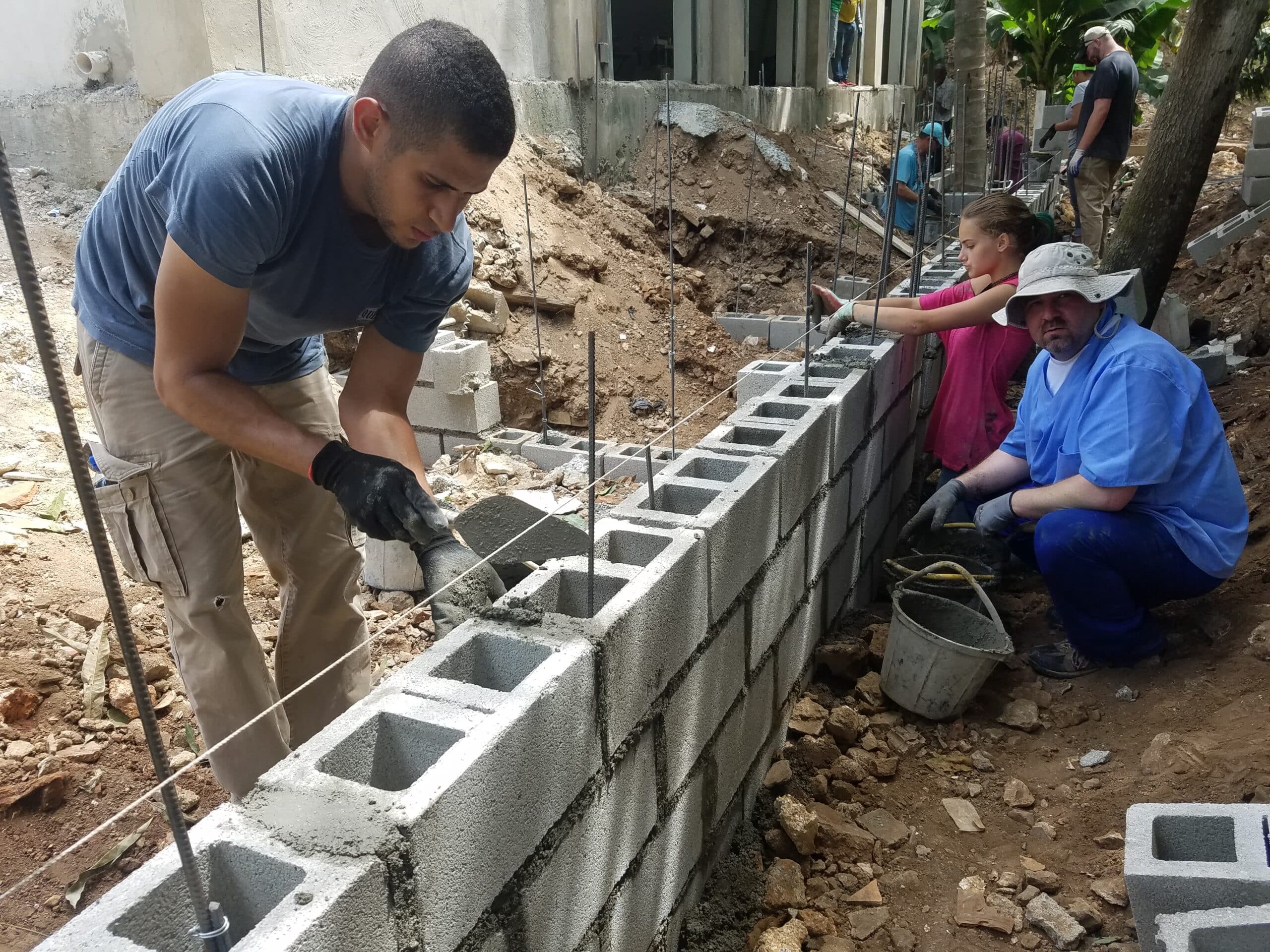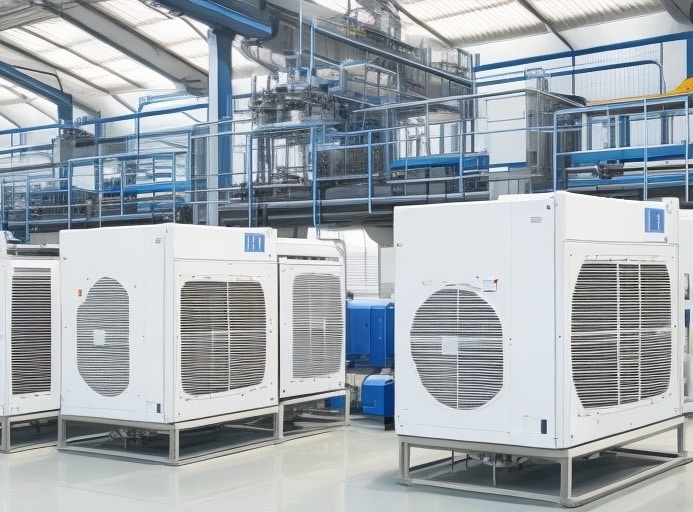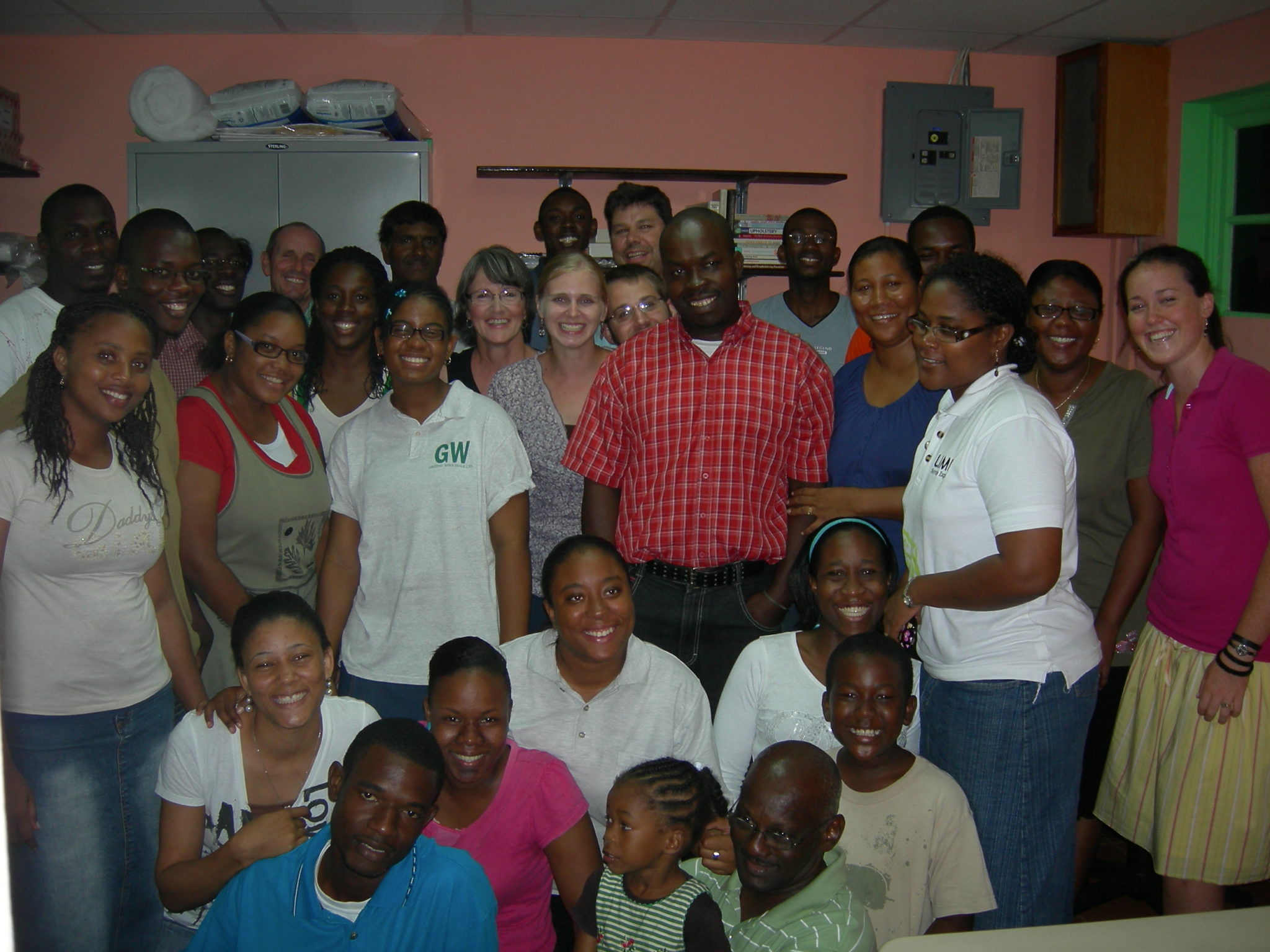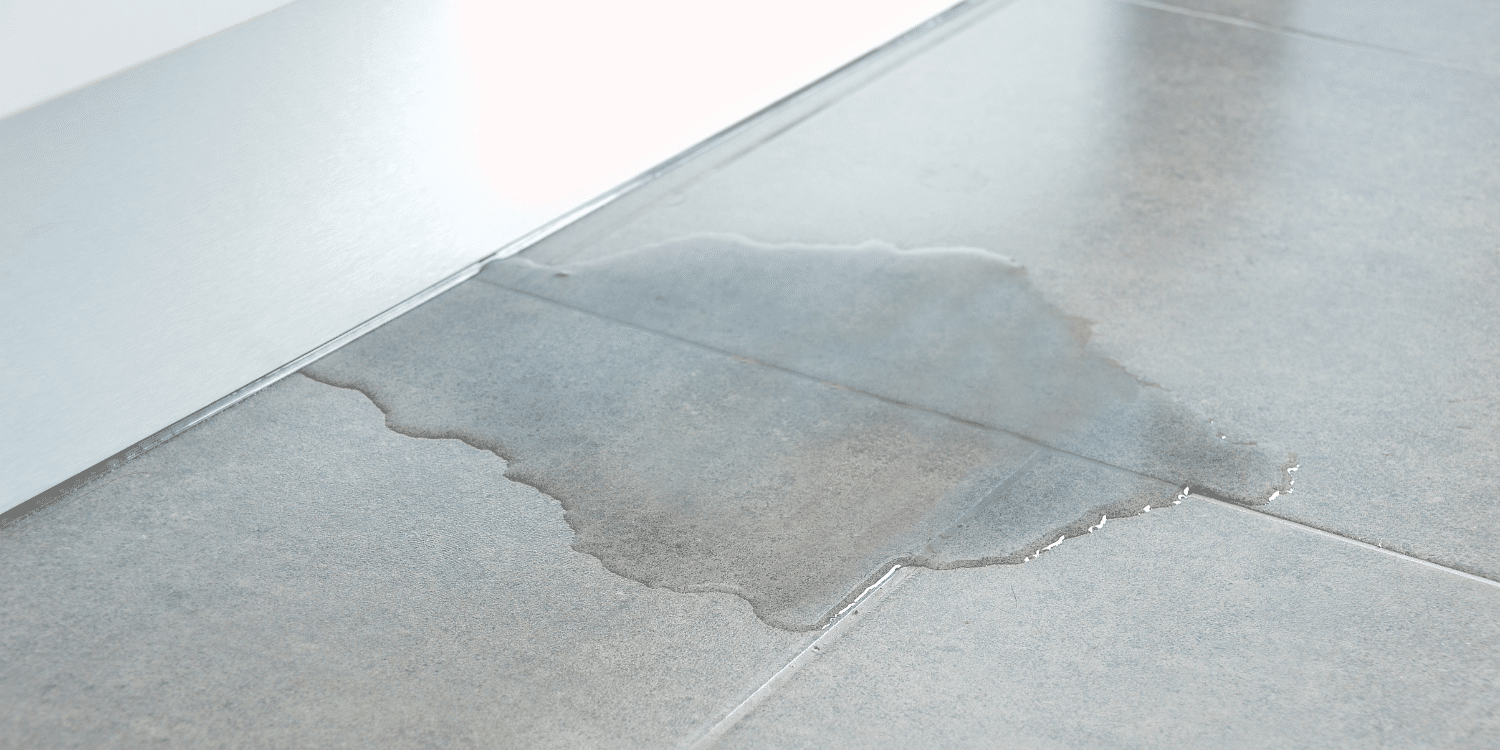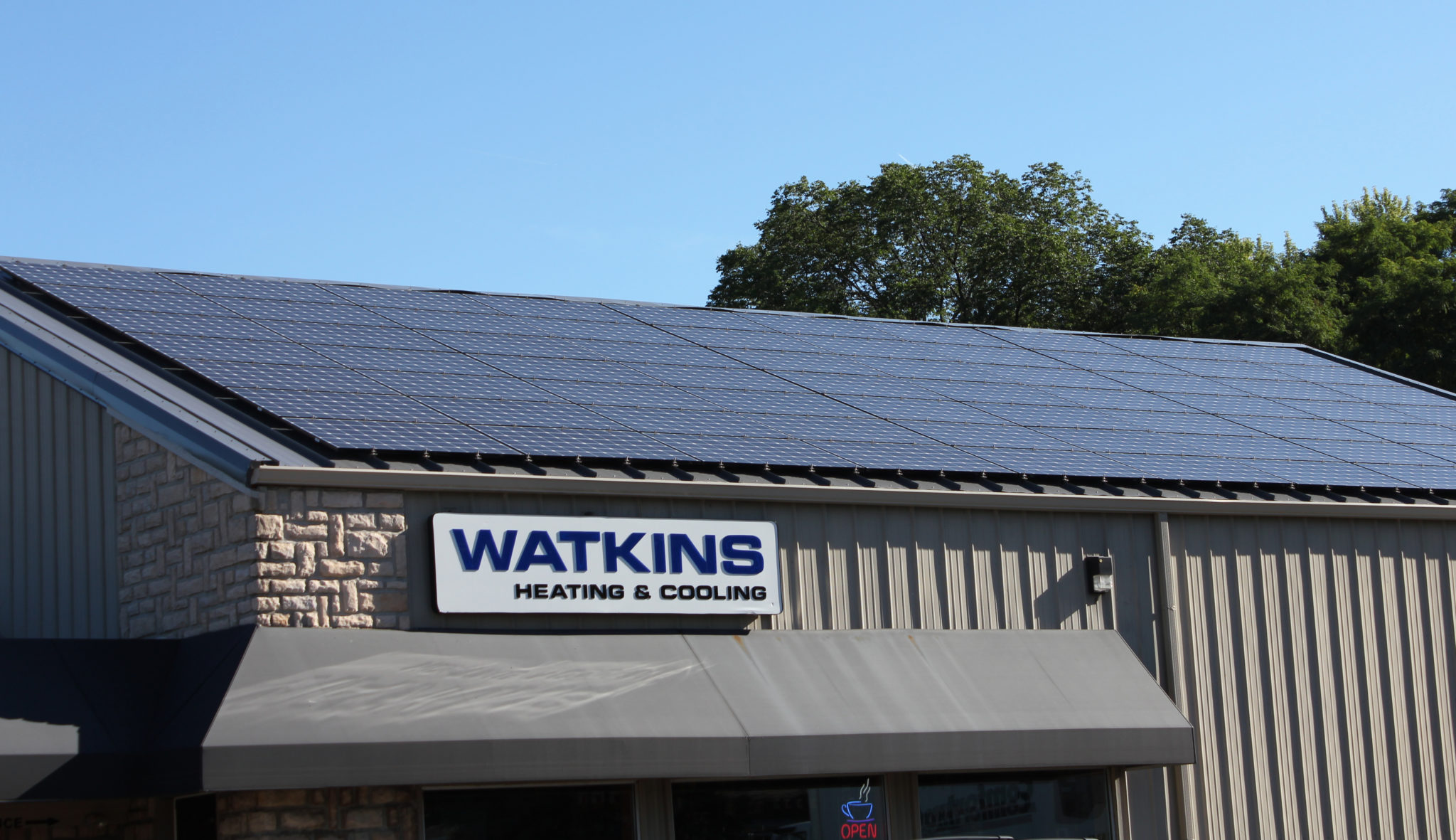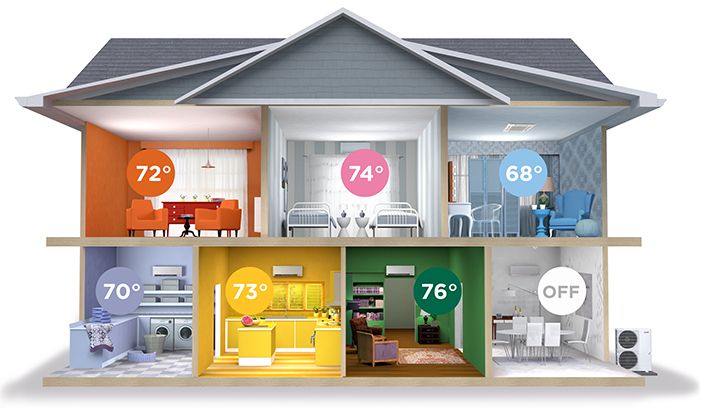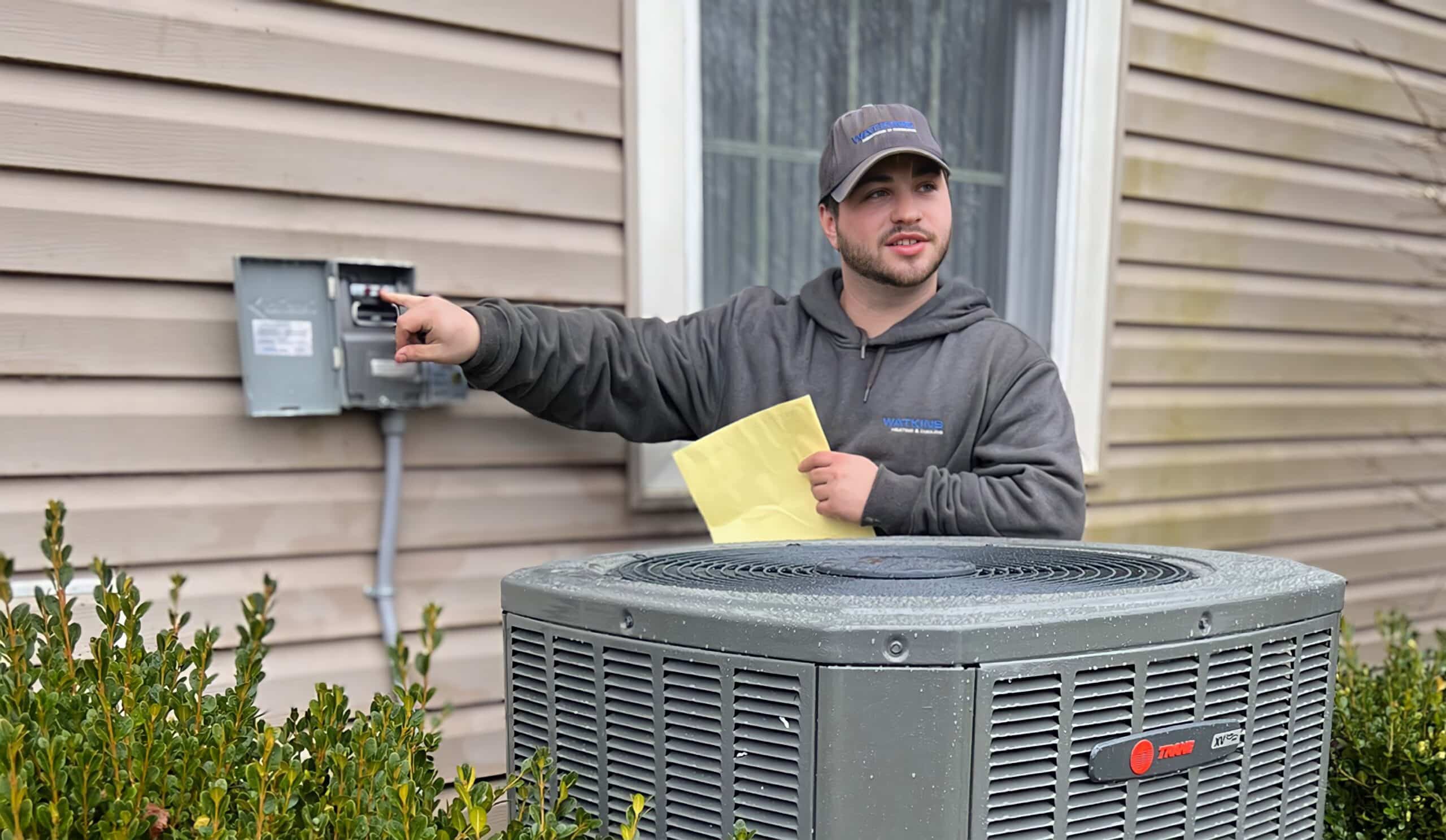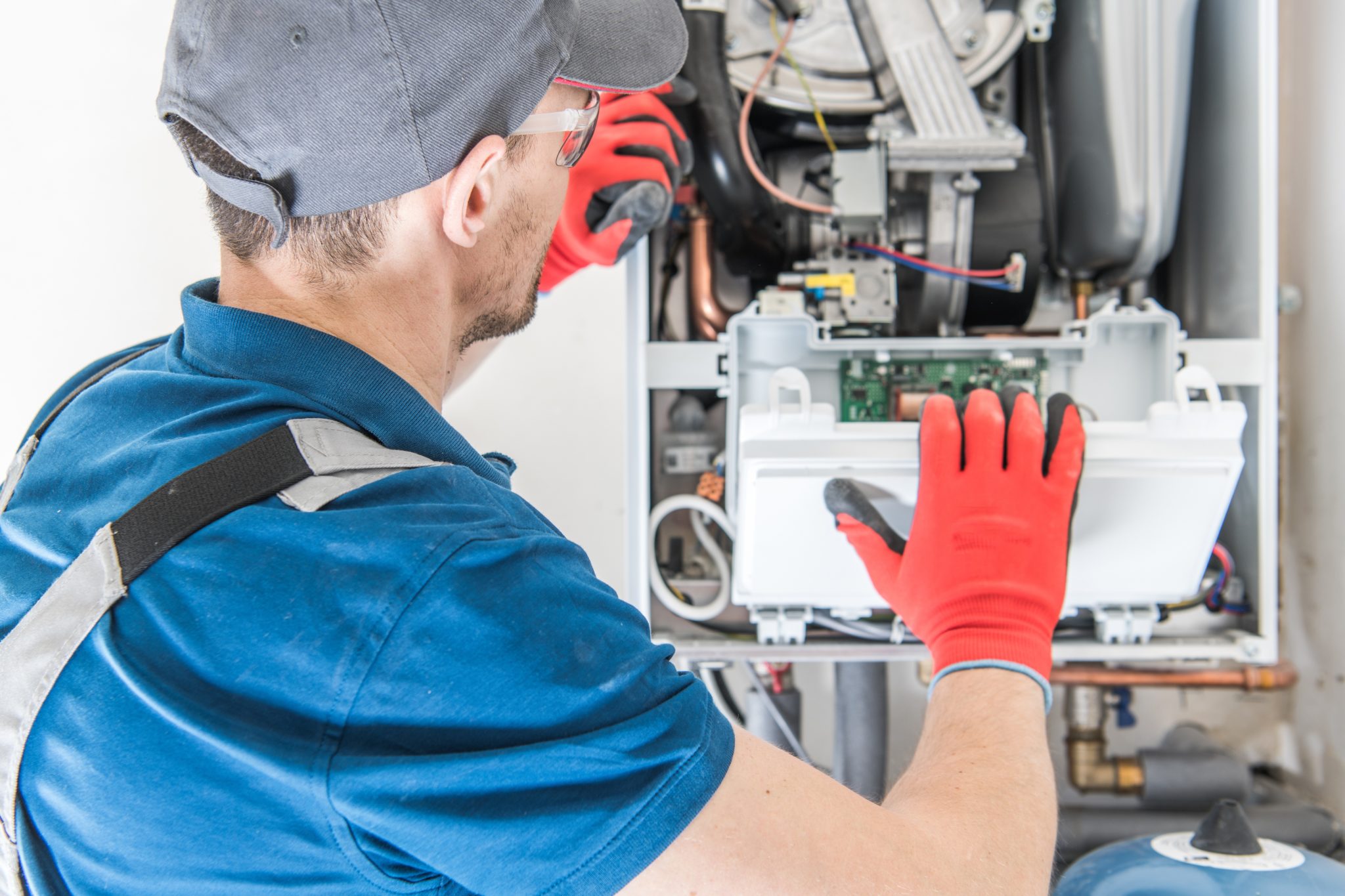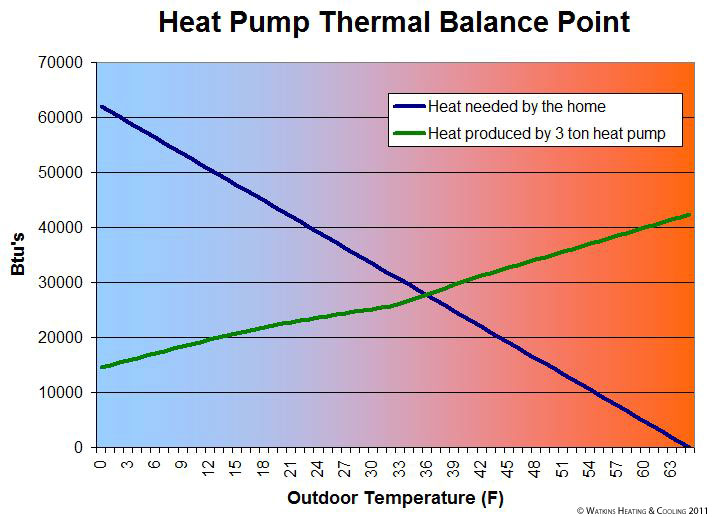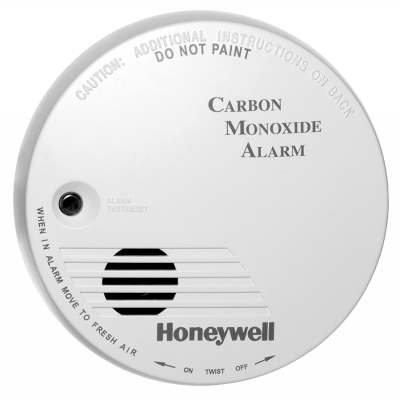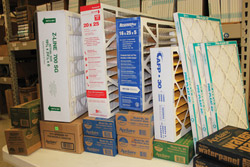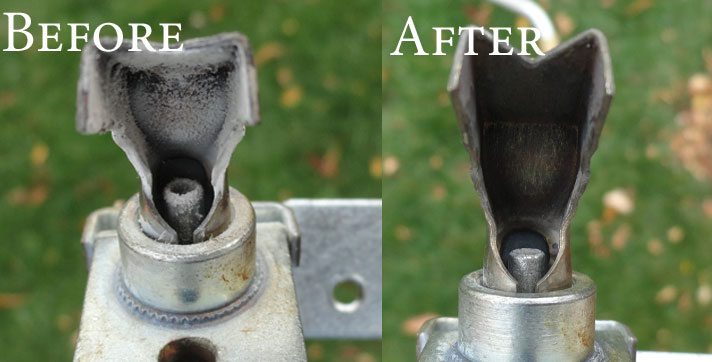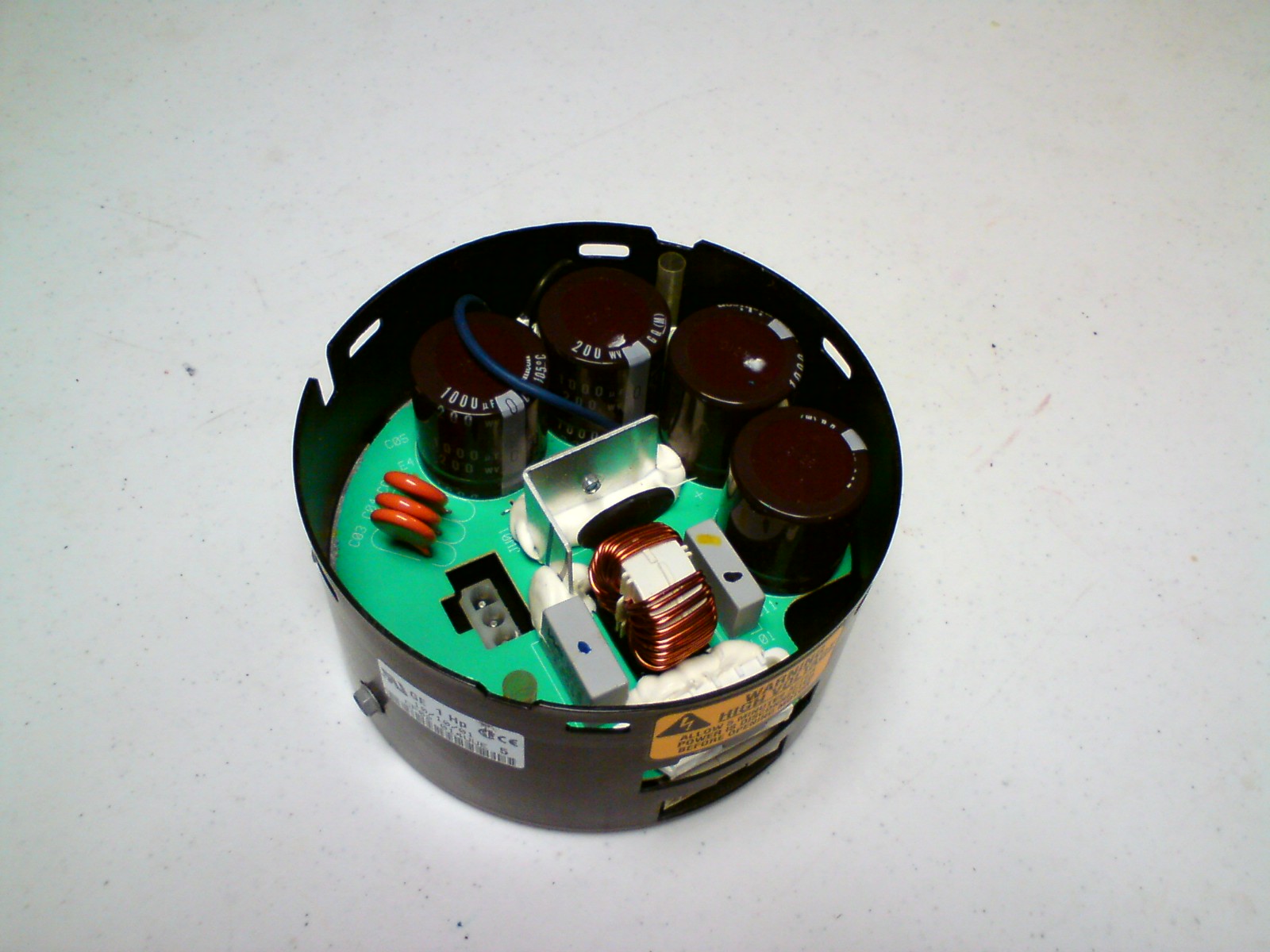R32 and R454b Refrigerant: The New Air Conditioner Refrigerants
It seems like yesterday that the HVAC industry switched from R-22 to R-410a due to EPA regulations. That shift happened in 2010 to lower the environmental impact of our air conditioning refrigerants, and now we’re changing again just 15 years later. It can be exhausting keeping up with the latest refrigerants. To make matters worse, we now have two choices depending on the manufacturer – R-32 and R-454b. We’ll try to make things a little clearer for you here. Let’s start by defining a few terms.
Key Terms: GWP, ODP, and A2L
- Global Warming Potential (GWP): A measure of how much heat a greenhouse gas traps in the atmosphere compared to carbon dioxide (CO₂). The higher the GWP, the more it theoretically contributes to climate change.
- Ozone Depletion Potential (OD): A number indicating how much a substance depletes the ozone layer. Old refrigerants were CFCs, meaning they contained chlorine. R-12 used in old refrigerators had an ODP of 1.0 while R-22 scored a tiny 0.05. All modern refrigerants, including R-410a, are chlorine-free and have zero ODP.
- Mildly Flammable Refrigerants (A2L): This is a safety designation for refrigerants. “A” stands for low toxicity, “2” indicates mild flammability, and “L” signifies a low burning velocity. They can only ignite under perfect conditions, and the “L” means the flame spread is not at all explosive. HVAC manufacturers have designed systems with multiple safety features to manage this risk, including enhanced leak detection built into the unit.
The two newest refrigerants for home air conditioning are R-454B and R-32. These replacements aim to reduce the high GWP of R-410A (which replaced R-22 15 years ago).
Government agencies introduced these new lower GWP alternative refrigerants to reduce environmental impact and meet regulations, but there always seem to be tradeoffs. In this article, we explain what these new refrigerants mean for homeowners just like you.
If you’re wondering what refrigerant even does in your home air conditioner, check out our guide on what refrigerant is before diving into the new kinds below!
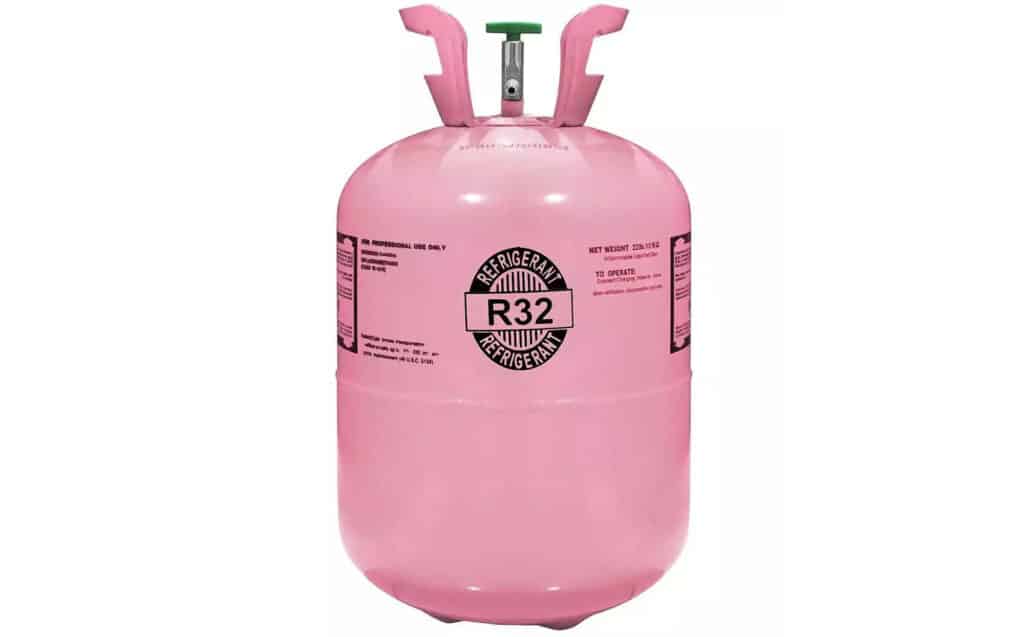
What Is R-32 Refrigerant?
R-32, chemically known as Difluoromethane, is a single-component Hydrofluorocarbon gas (HFC). R-32’s global warming potential (GWP) of 675 is about one-third of R-410A and delivers an ODP of zero, so the EPA views it as a more environmentally friendly choice. Some manufacturers like it because it’s cheaper, and it takes less R-32 to fill an A/C system. In addition, it’s easier for technicians to use since it is not a blended gas.
R-32 has been used in parts of the world like Japan for various applications since the 2010s. Since it falls into the A2L category, systems using R-32 must incorporate safety features such as built-in leak detectors and shutdown mechanisms. However, these measures are well-tested and widely adopted, so a properly installed R-32 system poses minimal risk.
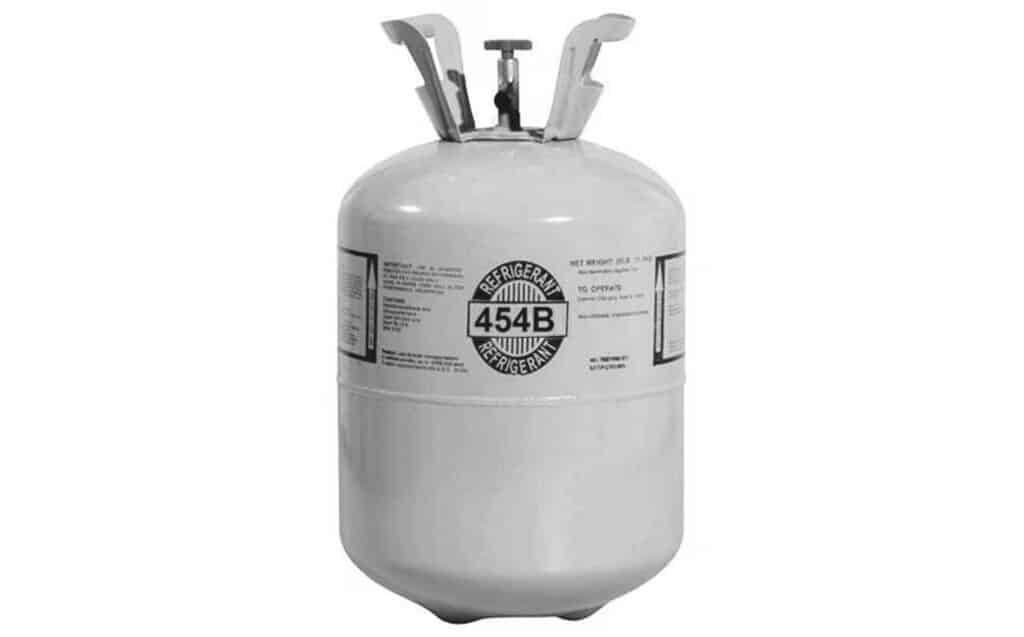
What Is R-454b Refrigerant?
R-454b, often marketed as Opteon XL41 or Puron Advance™, is a blend of R-32 and R-1234yf. This mix of Hydrofluorocarbon gas (HFC) and Hydrofluoroolefin gas (HFO) results in a GWP of just 466 – even lower than R-32. Manufacturers adopting R-454b believe regulators will continue to tighten GWP standards, and they want to be ahead of the curve. Opteon XL41 is regarded by many as the refrigerant with the lowest environmental impact today.
Like R-32, R-454b falls into the same A2L mildly flammable refrigerant classification. With R-1234yf offering flame-retardant properties, R-454b is safe for use in homes using new HVAC design standards. Since it is a blend of different gases, special care must be used by a technician when recharging your air conditioning system.
Do R32 and R454b Refrigerant Cost More?
One of the most common questions homeowners ask is whether these new refrigerants will be more expensive. The short answer is yes, these new lower GWP alternative refrigerants come at a higher price.
The cost is noticeably higher compared to the older, more established options we’ve gotten used to. Part of the cost difference comes from manufacturers still scaling up production of R-32 and R-454B, and they have invested millions to redesign equipment to handle A2L refrigerants. Supply and demand also plays a role, as limited availability in certain regions can increase prices. Over time, these costs may fluctuate, but for now, expect a slight price premium on the refrigerant itself.
As of February 2025, the wholesale price of R-32 is about 48% more than R-410a, and R-454b is about 150% more than R-410a. The actual effect on homeowners is not so pronounced since labor makes up most of the cost to recharge an air conditioner. If you needed 2 lbs. of R-454b added, you could expect to pay an extra $50 compared to an R-410a system.
With lower GWP alternative refrigerants come a price increase.
Of course, the market is constantly changing, and we expect to see the prices of the new refrigerants fall and stabilize as the supply chain fully adapts.
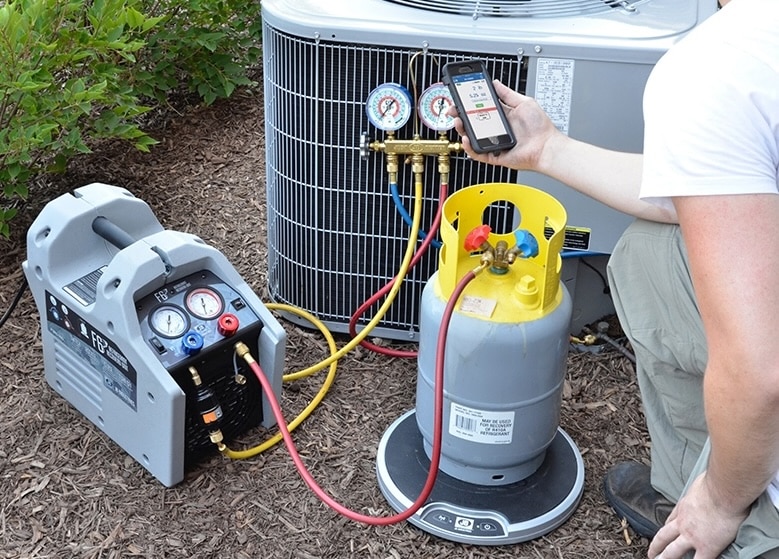
Are A2L Refrigerants like R-32 and R-454b Safe?
It can sound a bit scary when homeowners hear that R-32 and R-454B are “mildly flammable” (A2L) refrigerants. Rest assured, these new refrigerants are very safe to use.
For starters, the “mildly flammable” refrigerant classification means that they are still very difficult to light and not explosive. Additionally, refrigerant leaks are almost always tiny pinholes leaking just a few hundredths of an ounce per day. There’s almost no way a leak could ignite, and no risk to homeowners. Even so, manufacturers have designed the new AC units with leak detectors to shut the A/C down and run the fan to disperse even a minute buildup.
The only real caution is for the technician handling the refrigerant. We have to make sure our electrical tools, such as vacuum pumps and recovery machines, are rated for use with A2L refrigerants. We are also limited in how much refrigerant we can store in our warehouses. This only highlights the fact that R-32 and R-454b need to be handled by trained professionals.
As long as you have a licensed HVAC professional on the job, they’ll know the safety procedures and proper handling, charging, and storage of these systems so you can rest easy.
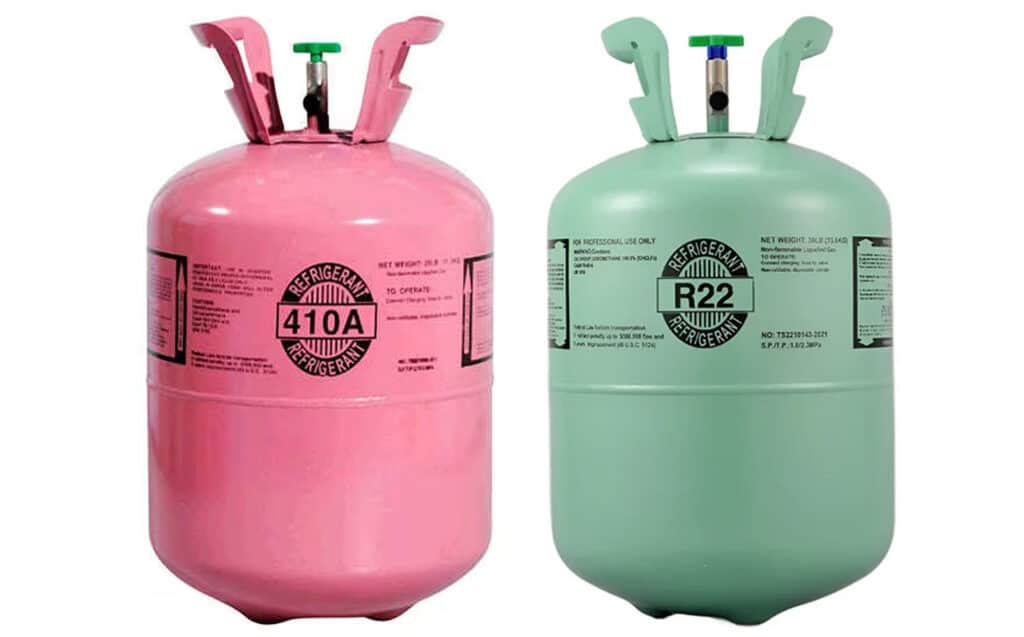
What About My Old Air Conditioner?
You don’t need to replace your functioning A/C unit just because newer refrigerants exist. Older HVAC systems built for R-22 or R-410A aren’t designed to handle the different properties of the new R-32 or R-454B, so they can’t be retrofitted. Converting to these new refrigerants requires a complete system replacement with new equipment.
Fortunately, if your AC runs on R-22 or R-410A, you can keep using it! Although manufacturers stopped producing new systems with these older refrigerants in 2025, HVAC companies can still service old equipment. The fact that manufacturers no longer use R-410a means they’re not competing to purchase it, and the wholesale price has fallen dramatically. Unlike R-22, there are no restrictions on the production R-410a, and we expect it to be available and affordable for many years.
At Watkins Heating & Cooling, we maintain ample stocks of R-22 and R-410a, and we plan to maintain our clients’ systems no matter the refrigerant. We also offer systems that use R-32 or R-454b; for example, Daikin units run on R-32, while Trane units use R-454b. Whether you want to keep your old system or upgrade to the latest new equipment, we have you covered.
FAQs About R-454B and R-32
R-32 is a single-gas refrigerant (better), while R-454B is a blend of two gases. R-454 has a lower Global Warming Potential and is slightly less flammable. R-32 has a slightly better energy efficiency. We think the tradeoffs cancel each other out.
R-410 does not meet the U.S. EPA's standards for Global Warming Potential. R-22 was phased out years ago due to its effect on the Ozone Layer.
Carbon dioxide (CO₂) is one of the most eco-friendly and high efficiency gases with a GWP of just 1. It’s already used in Europe for things like walk-in coolers and freezers. But for home air conditioners, it’s not practical yet because it needs very high pressure to work, and all current air conditioning systems would have to be completely redesigned. With more research and technology, though, carbon dioxide could become the refrigerant of the future.

